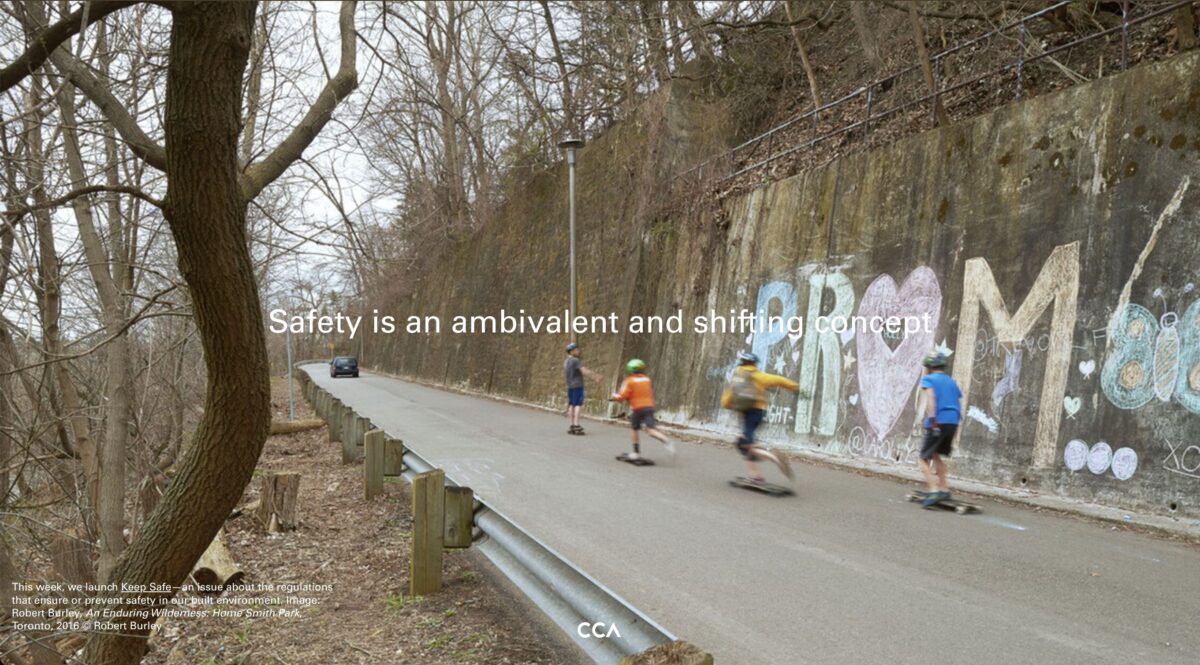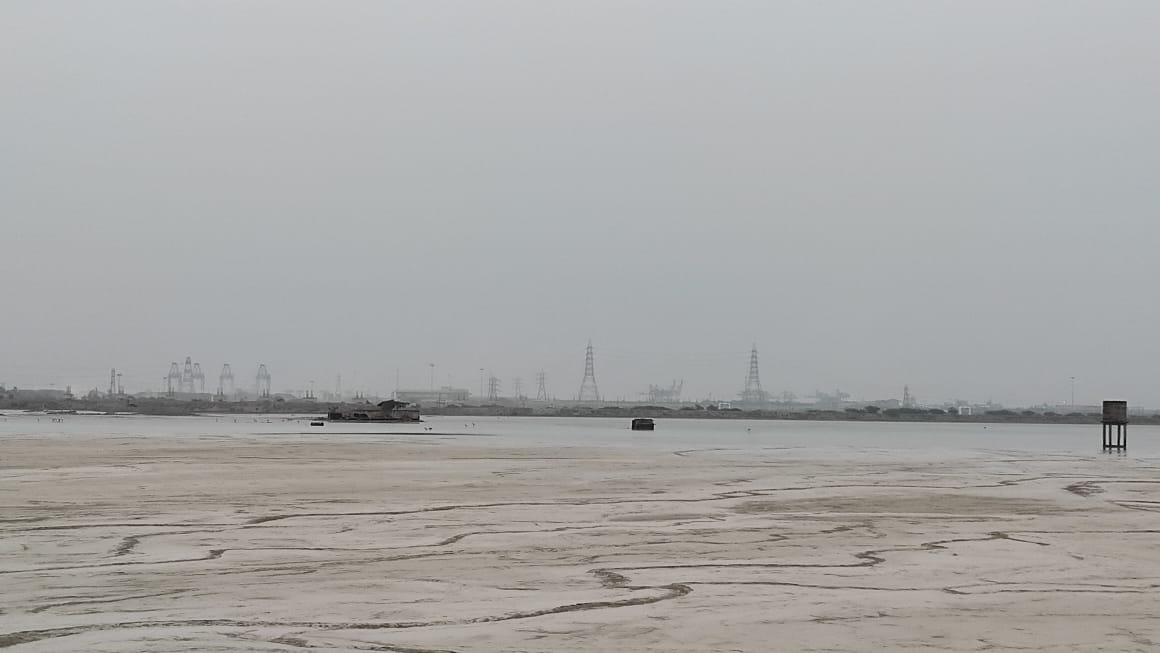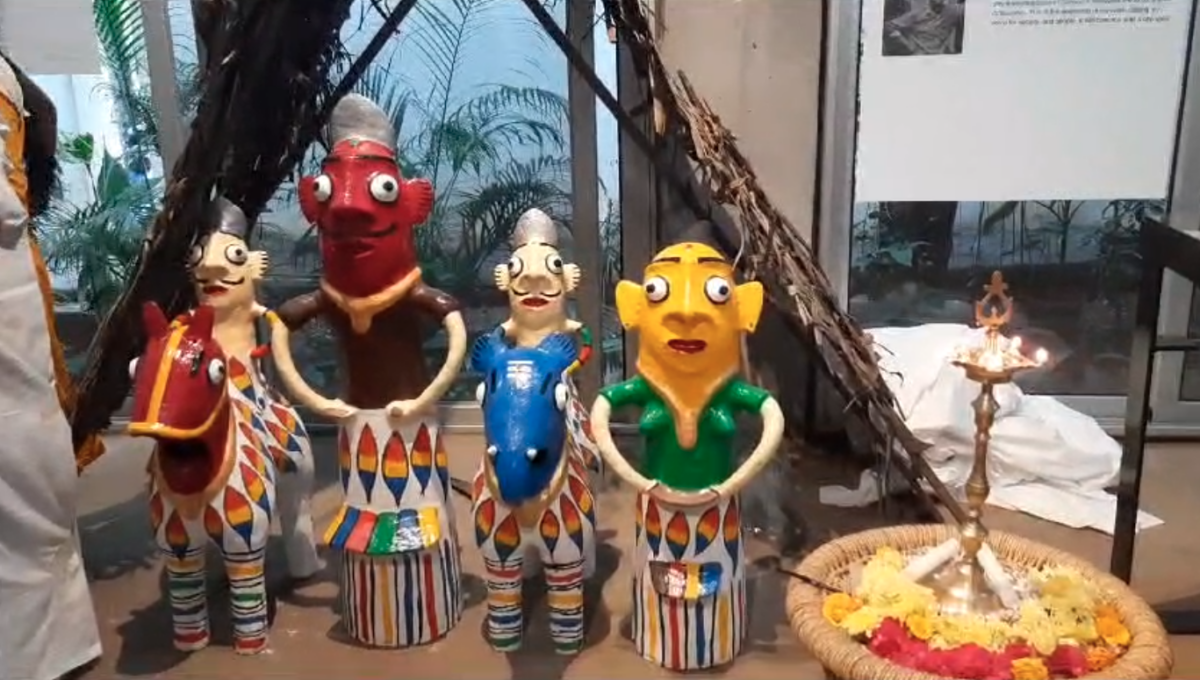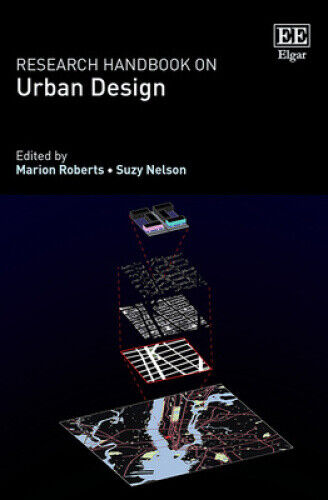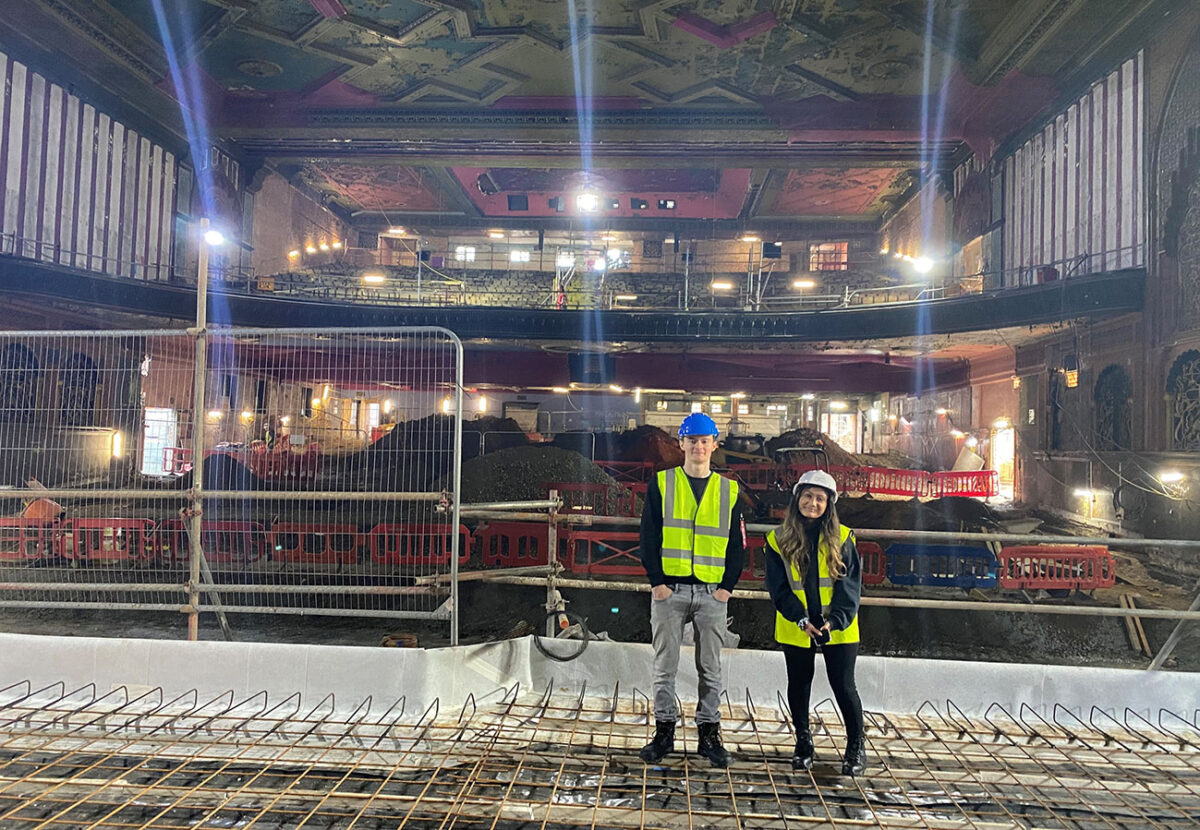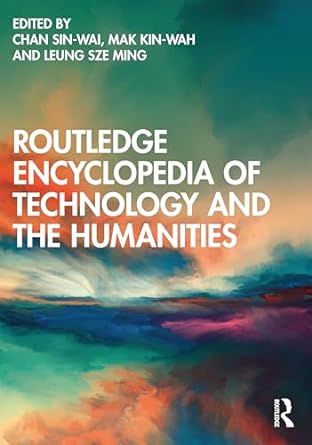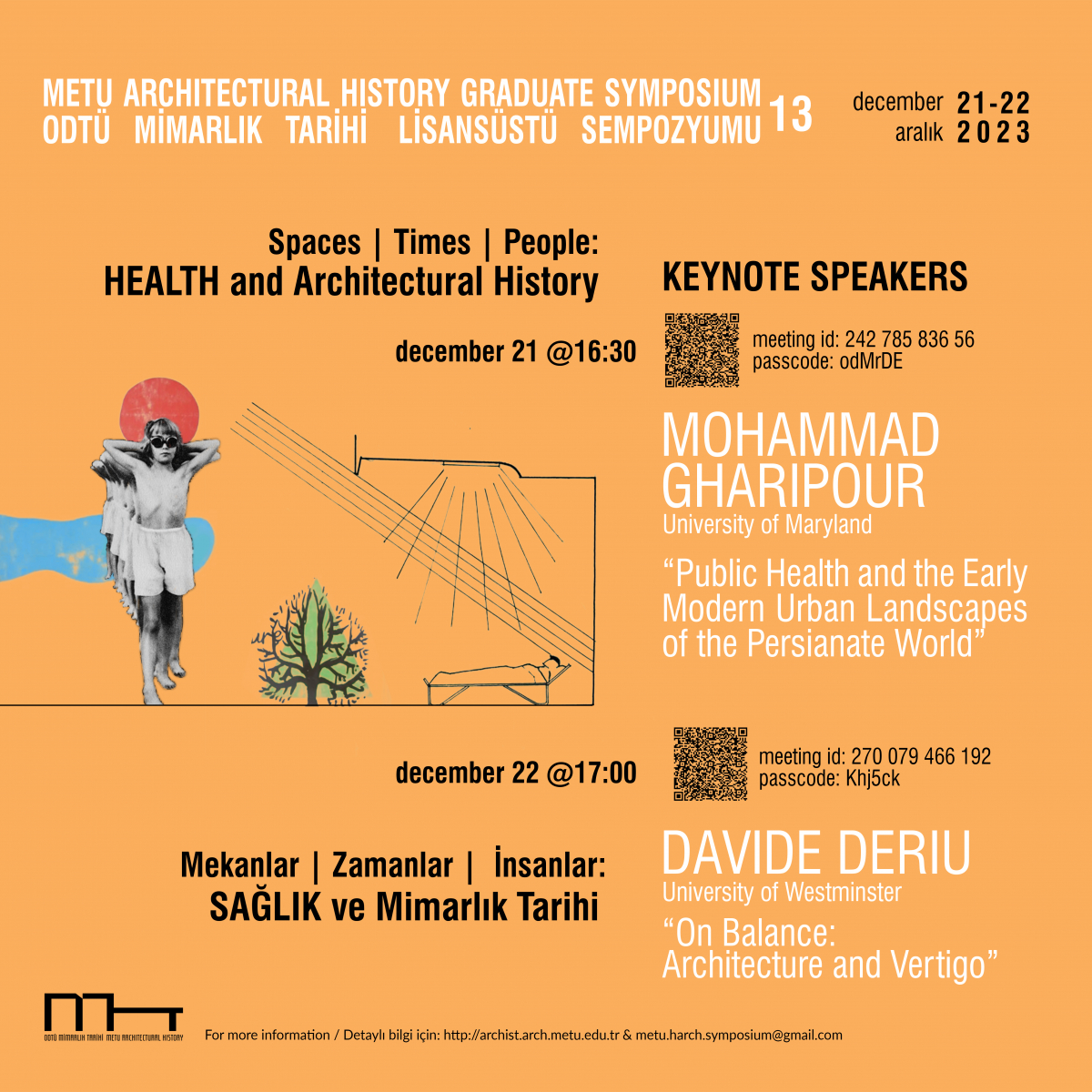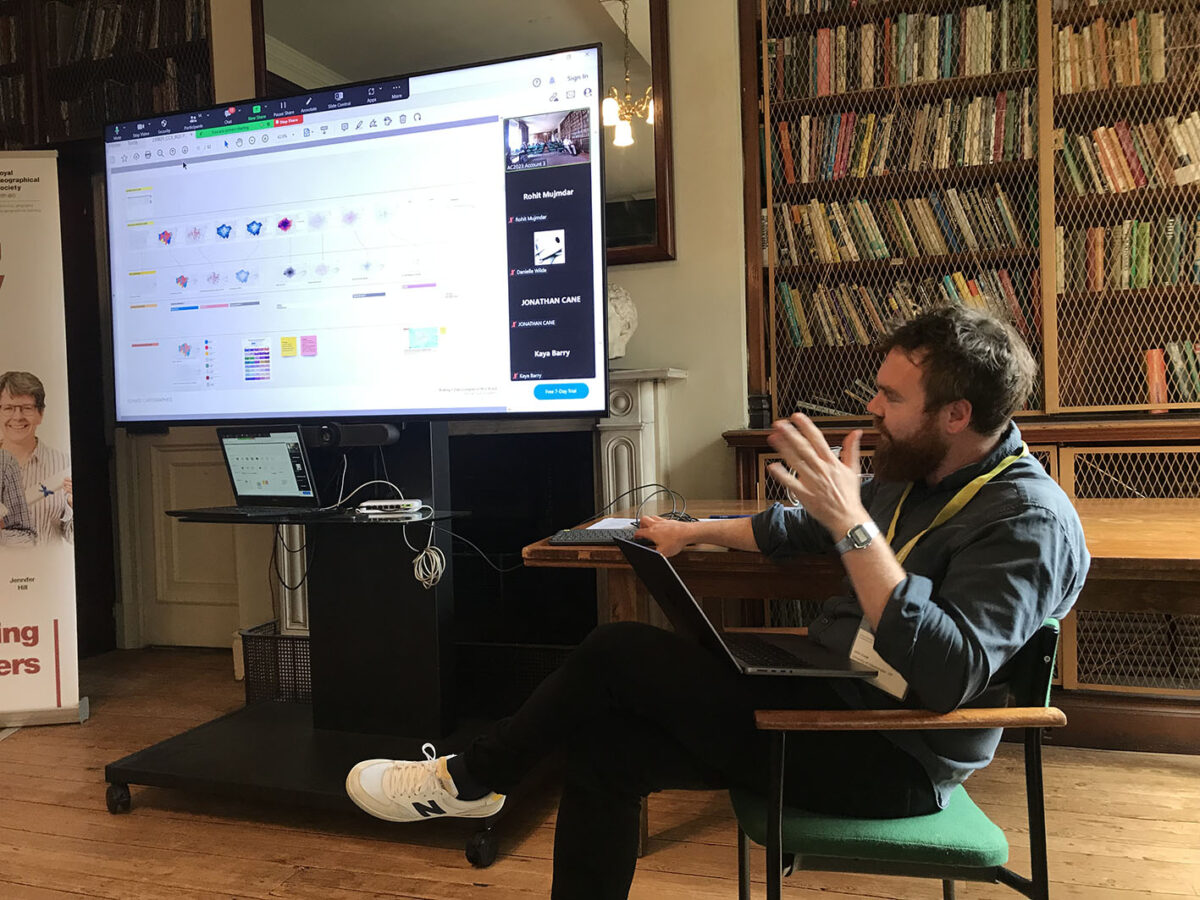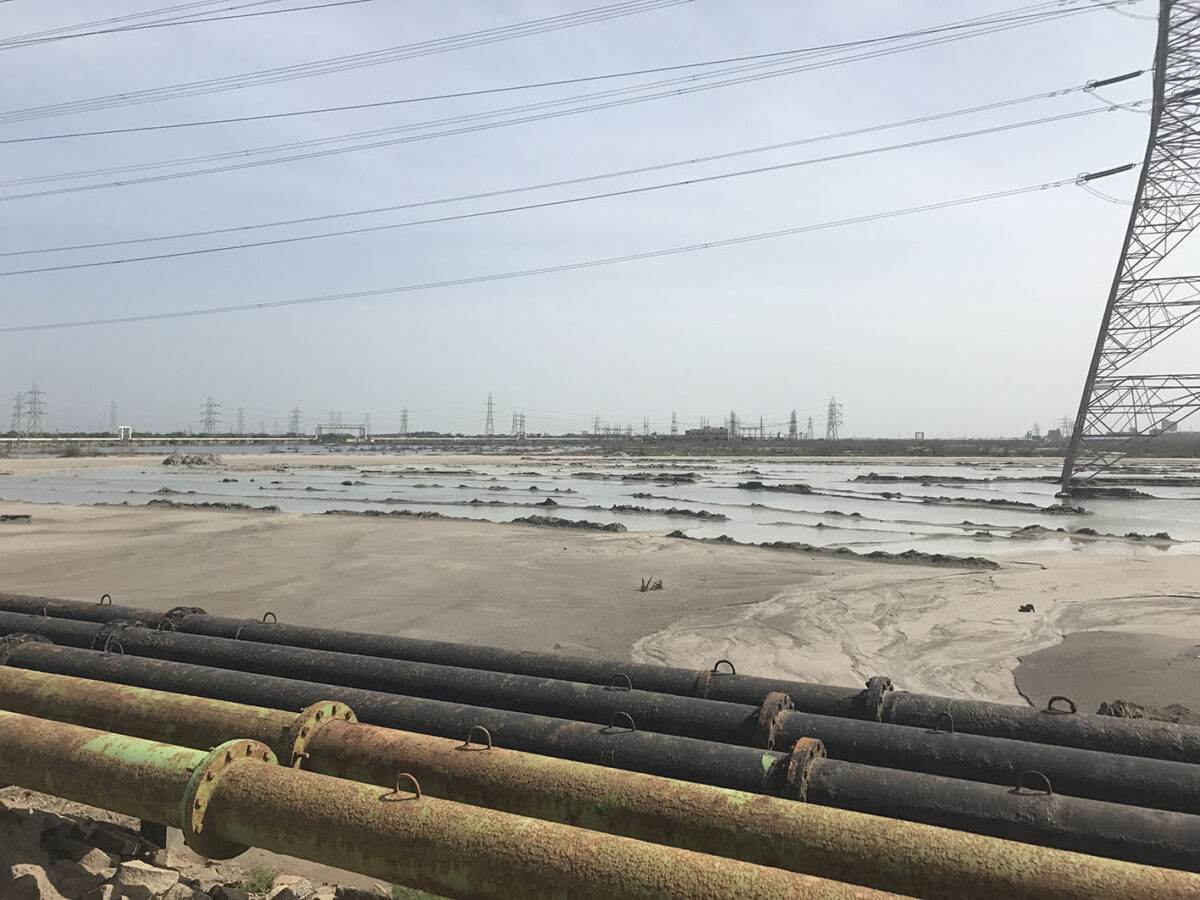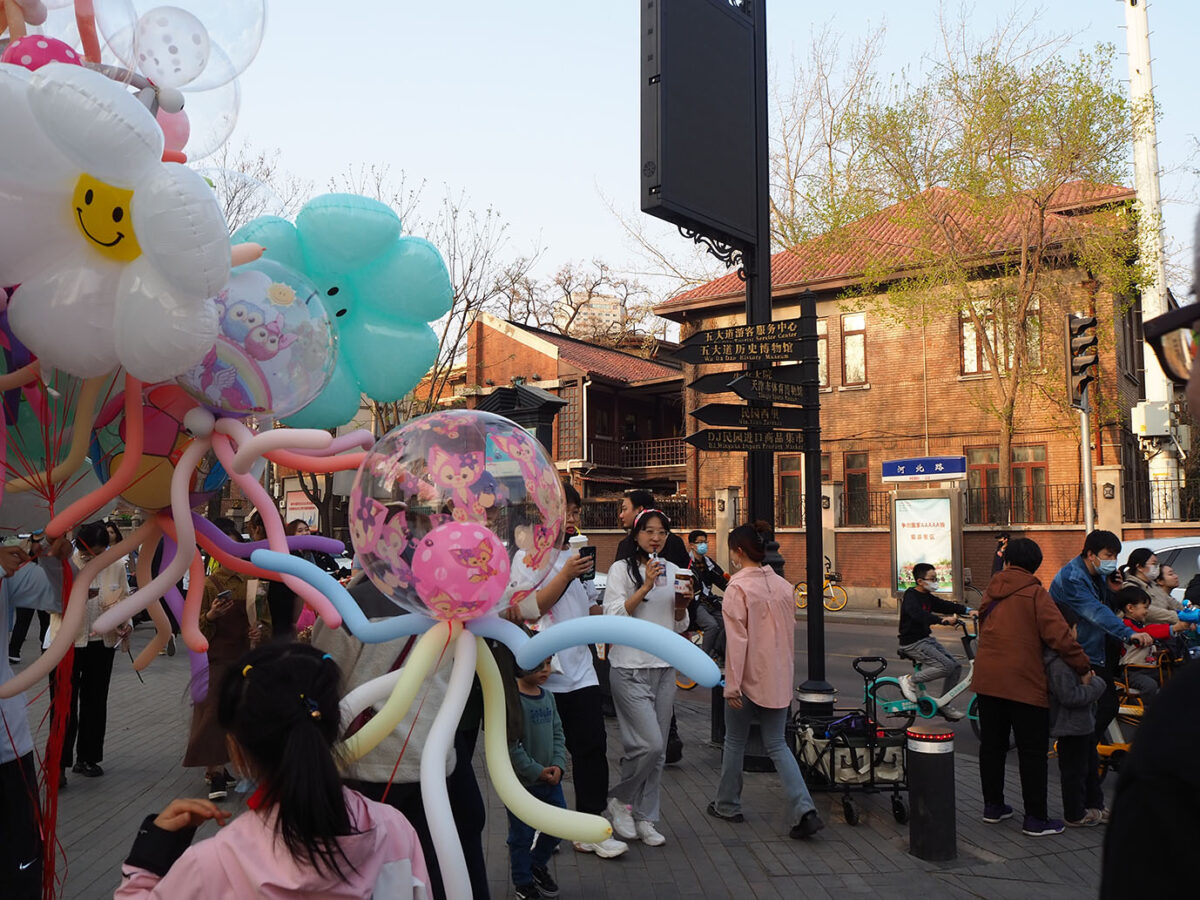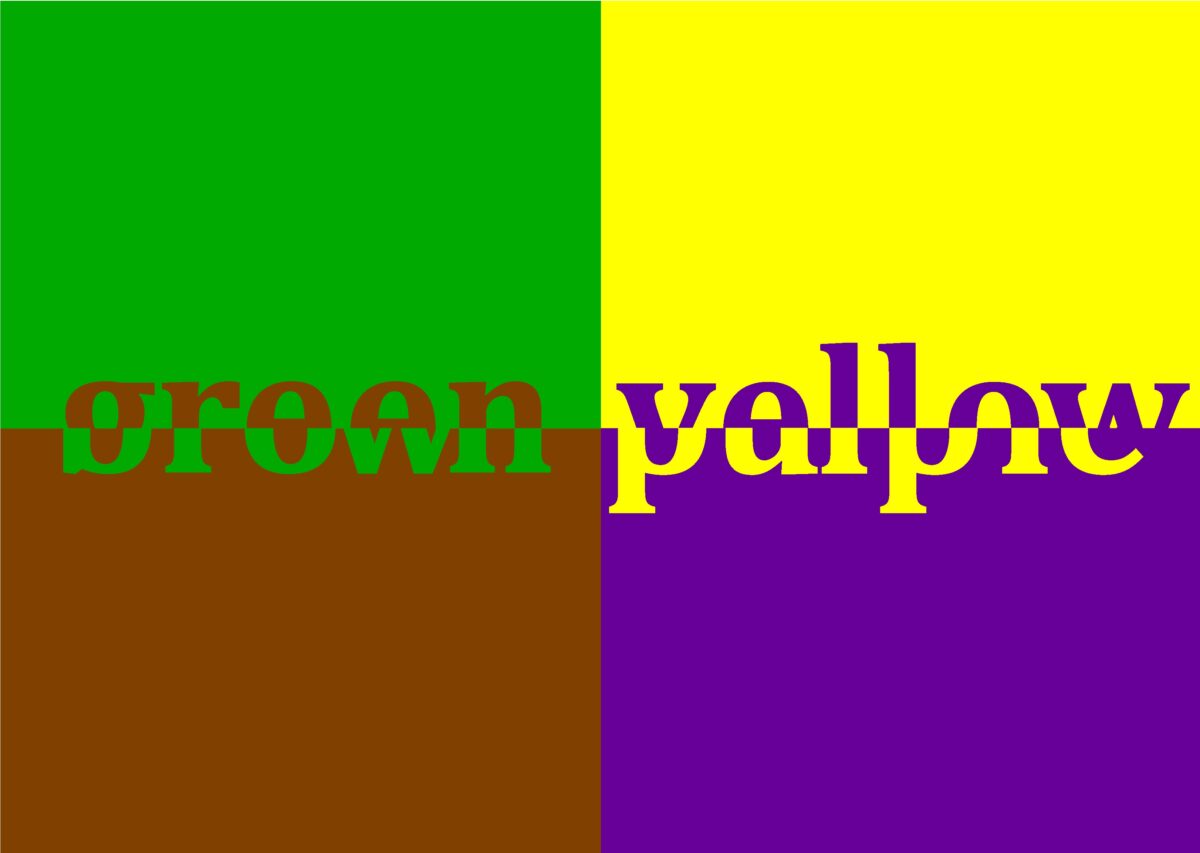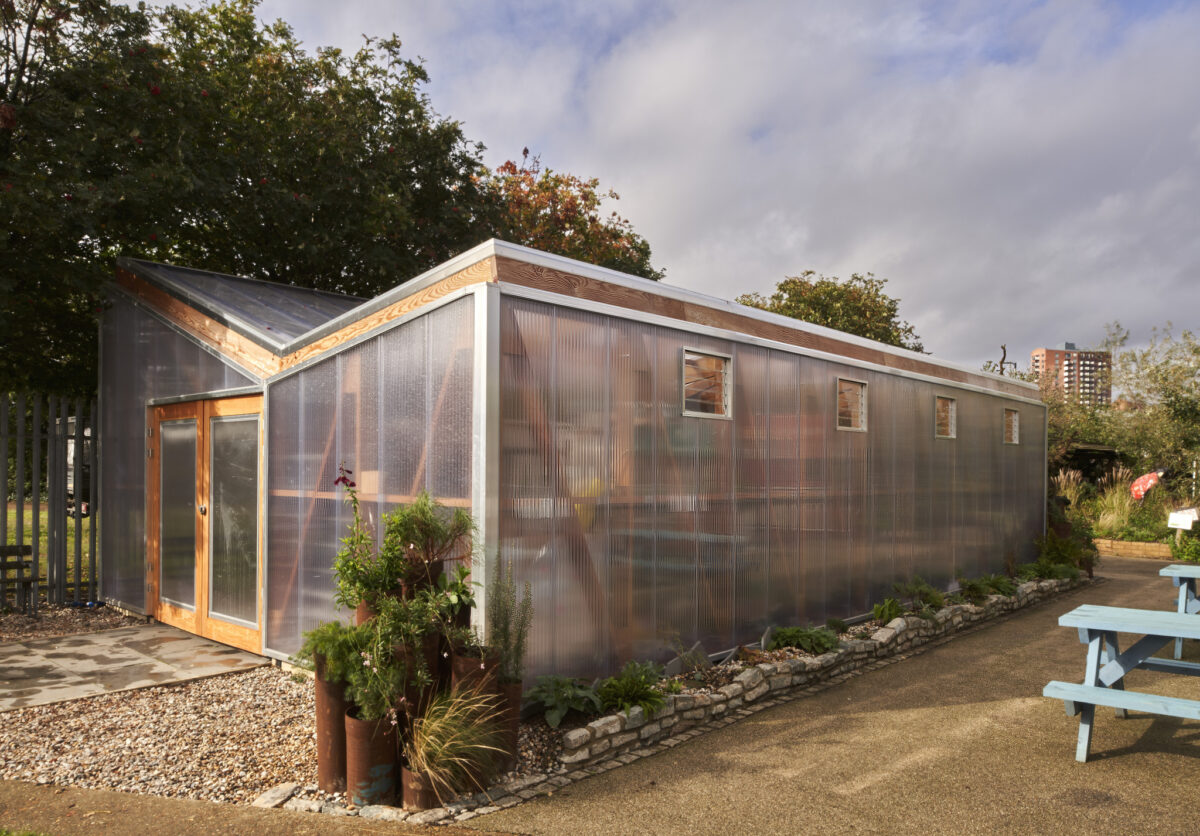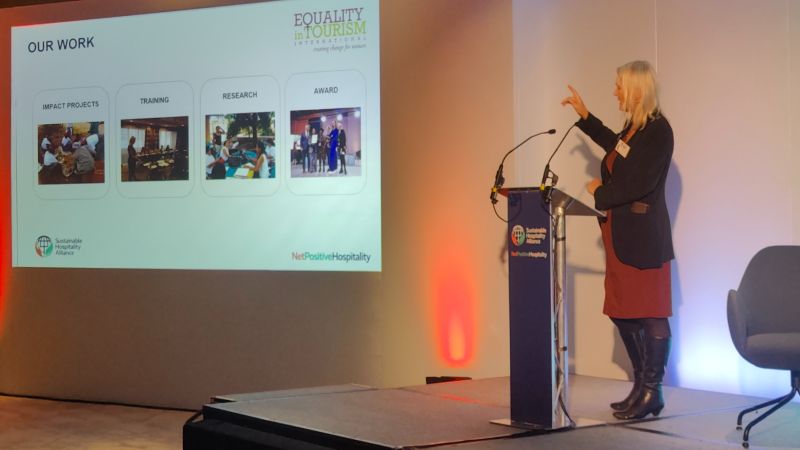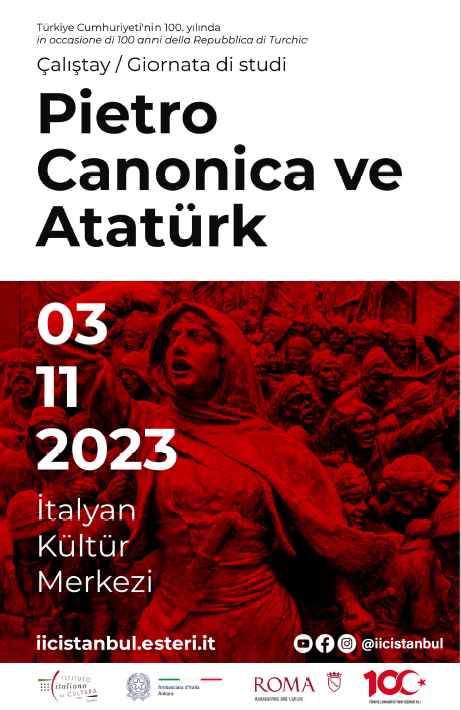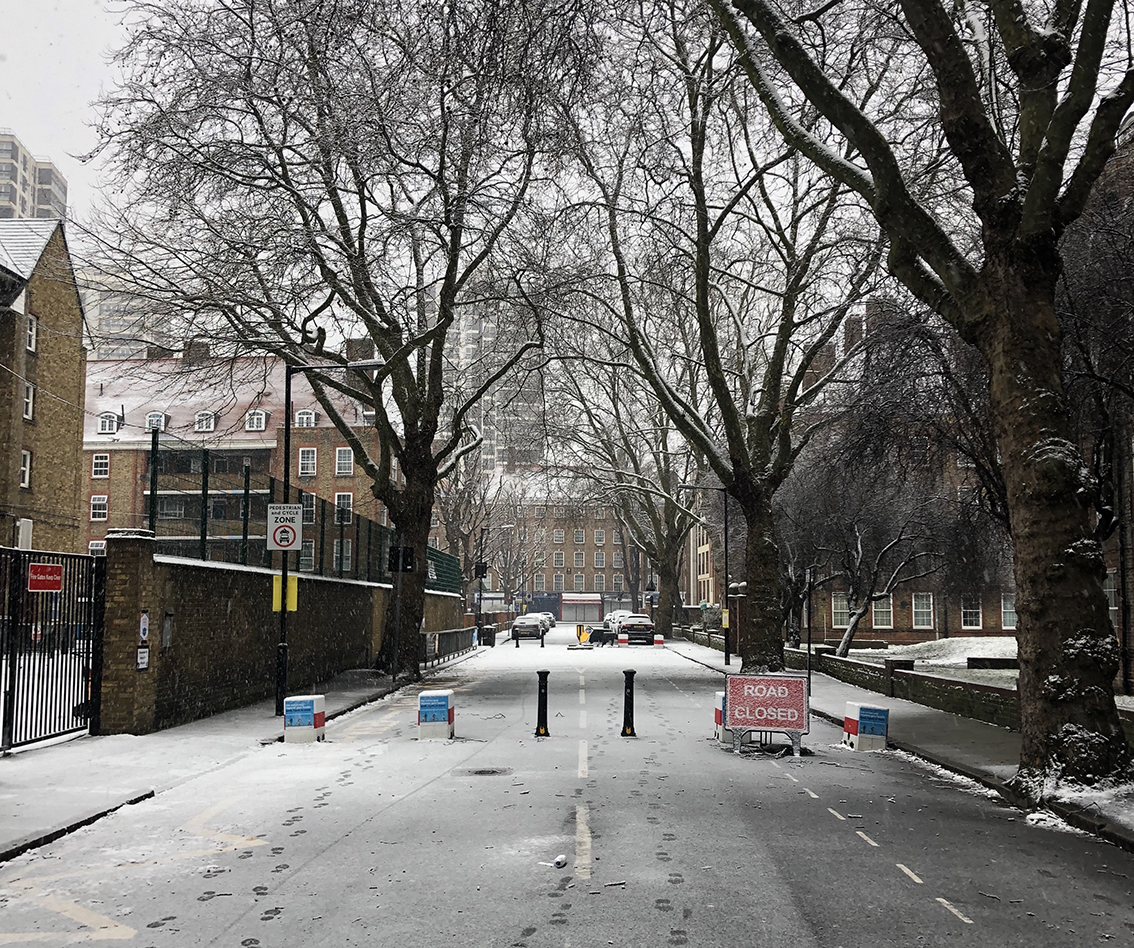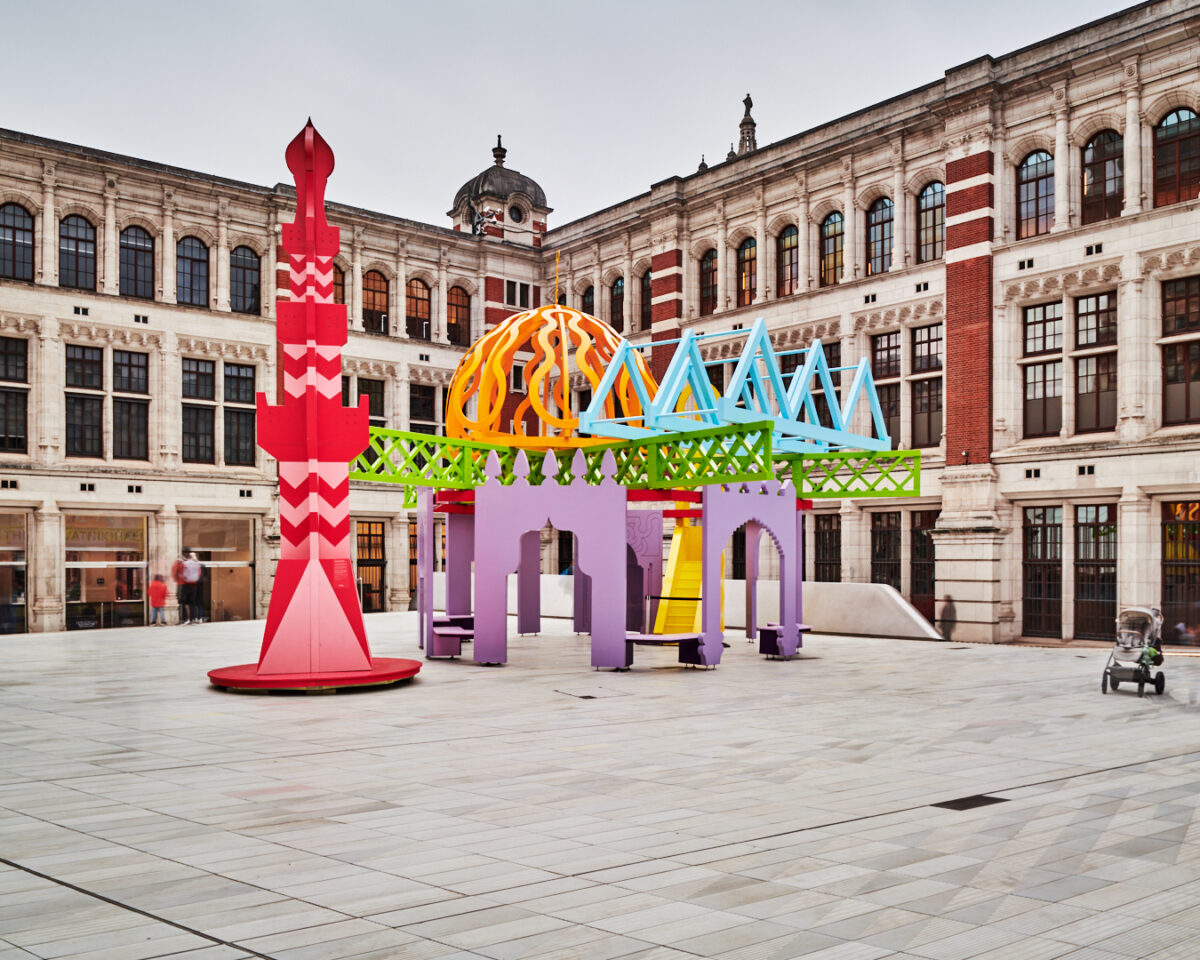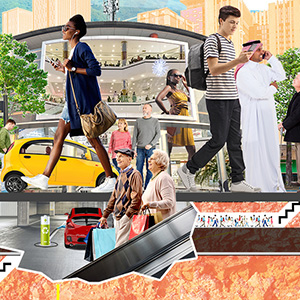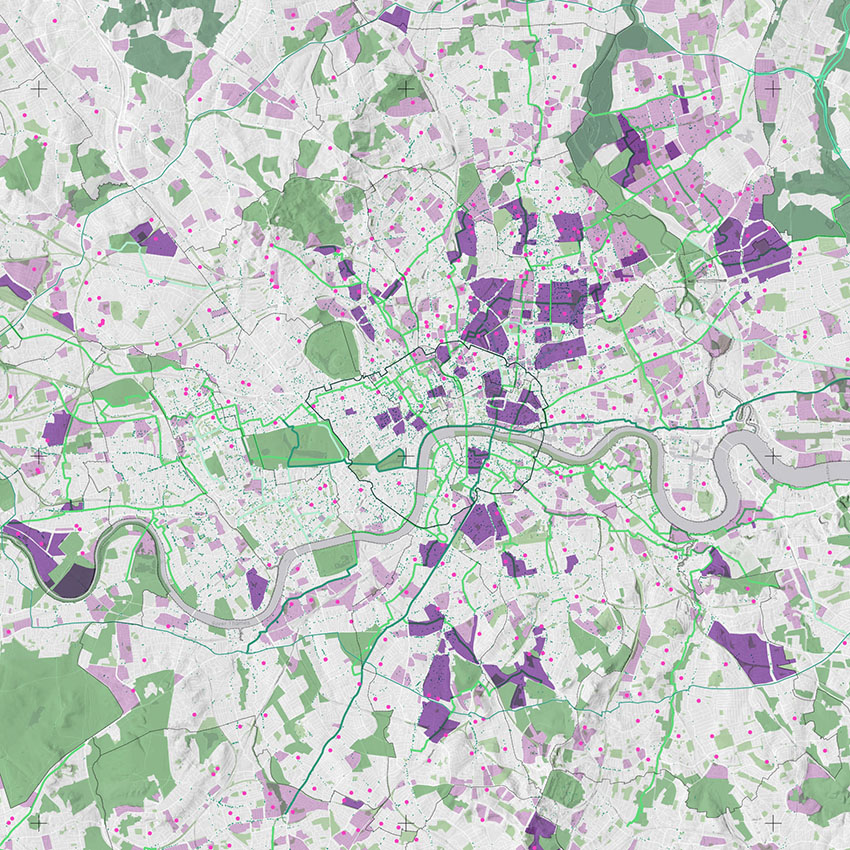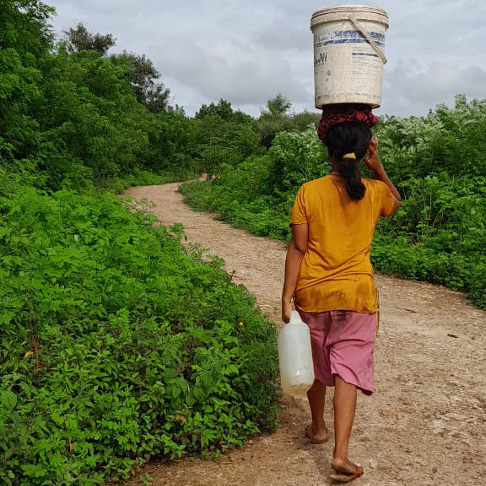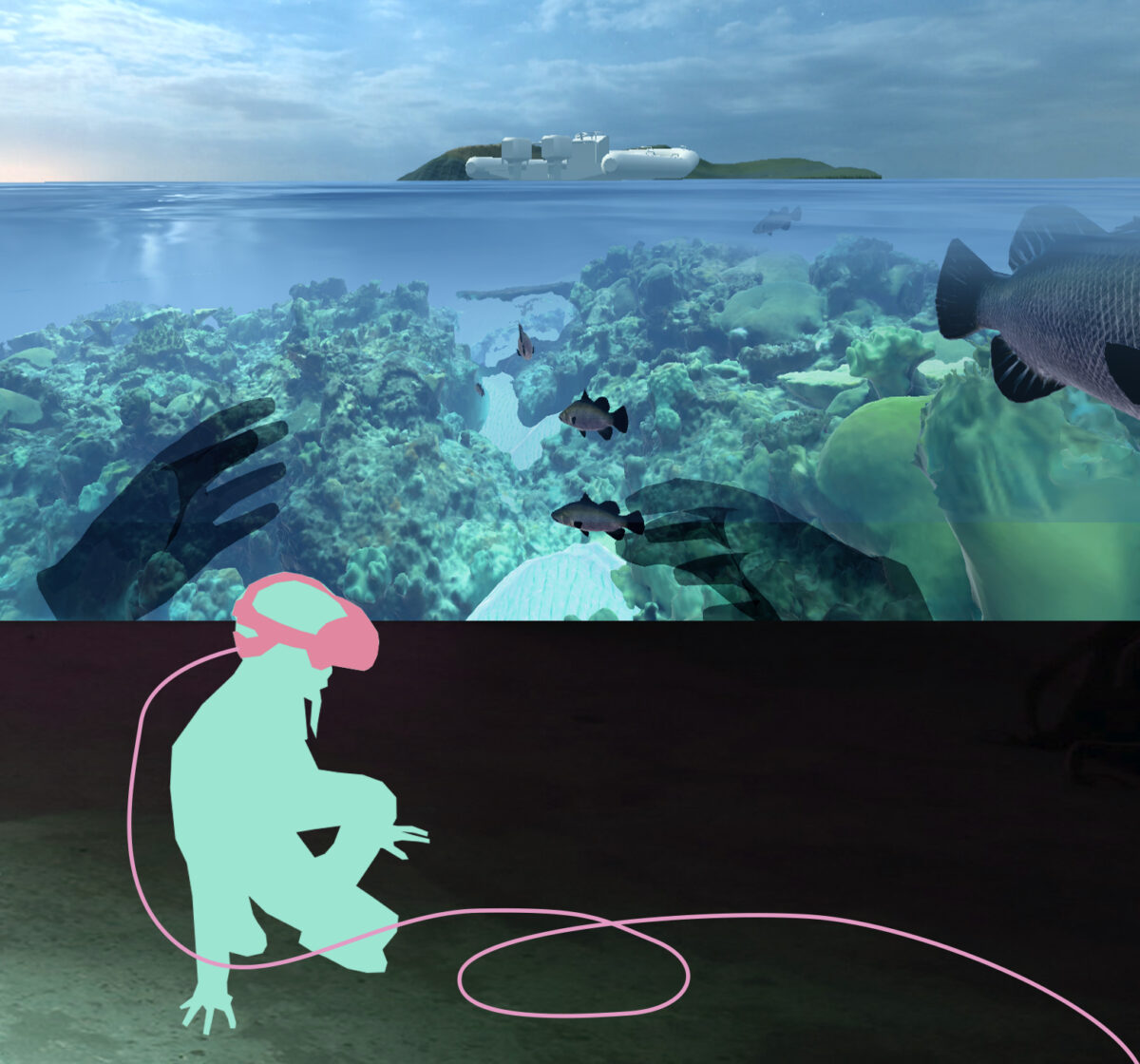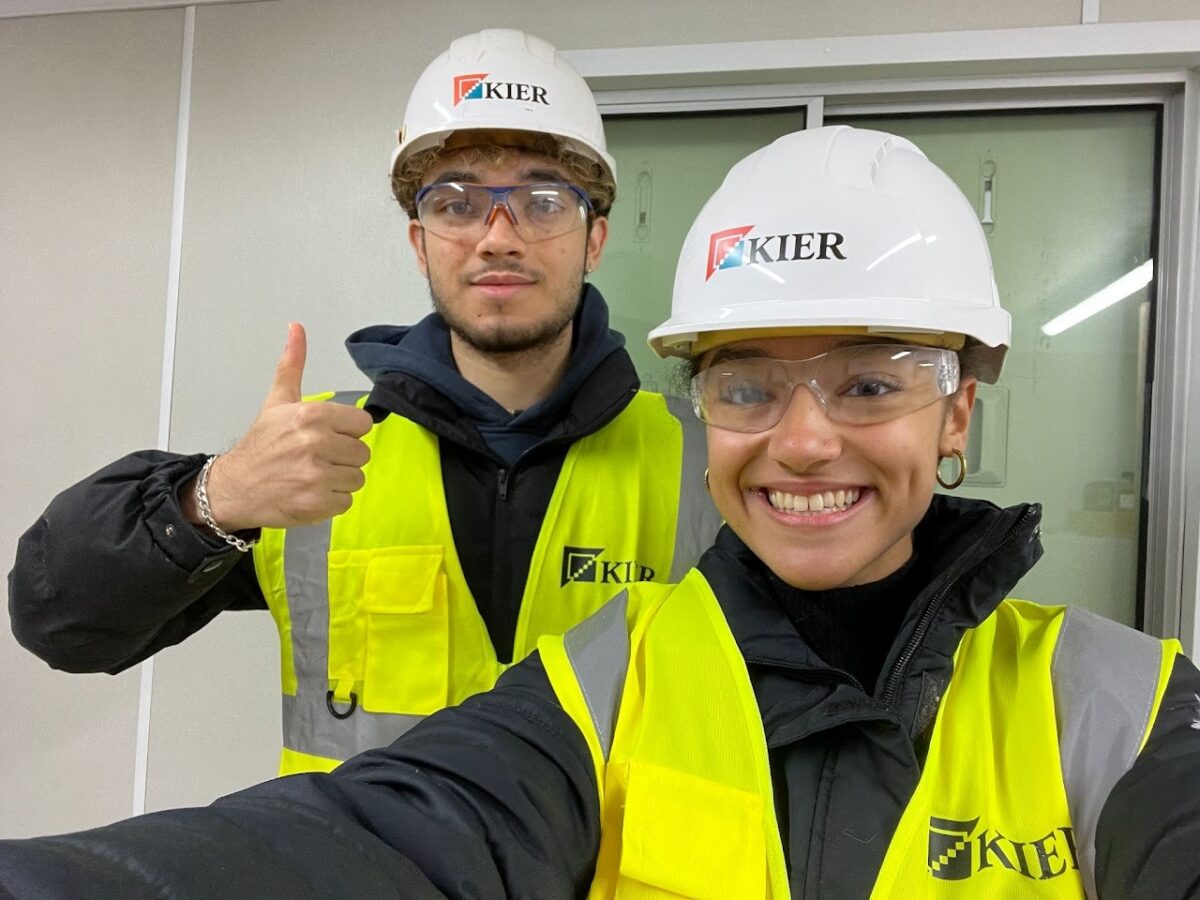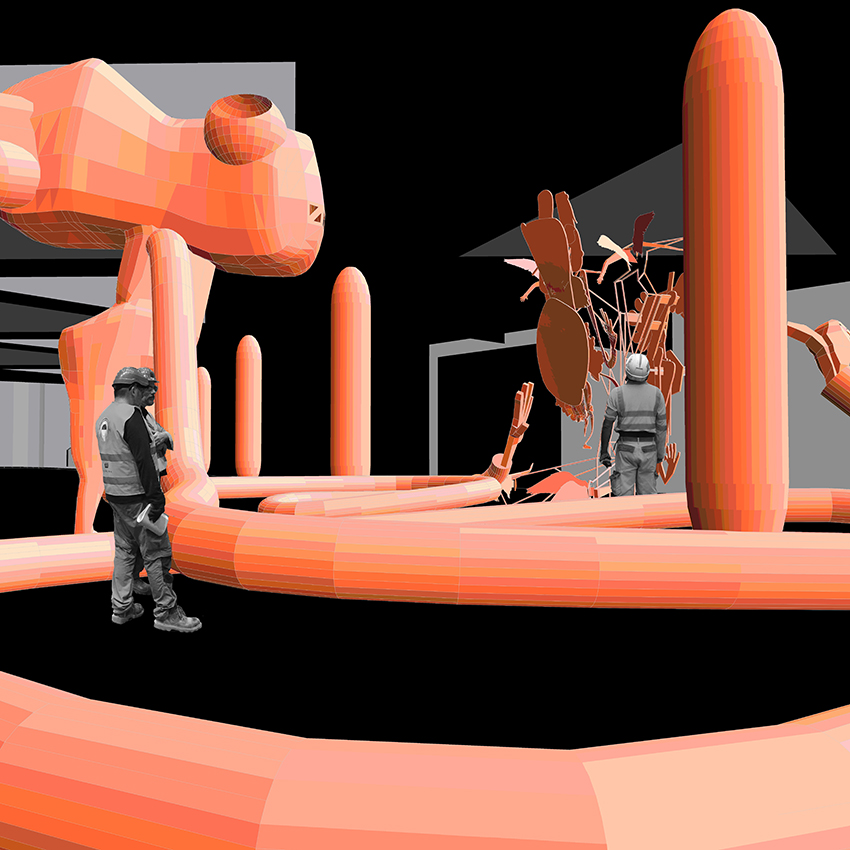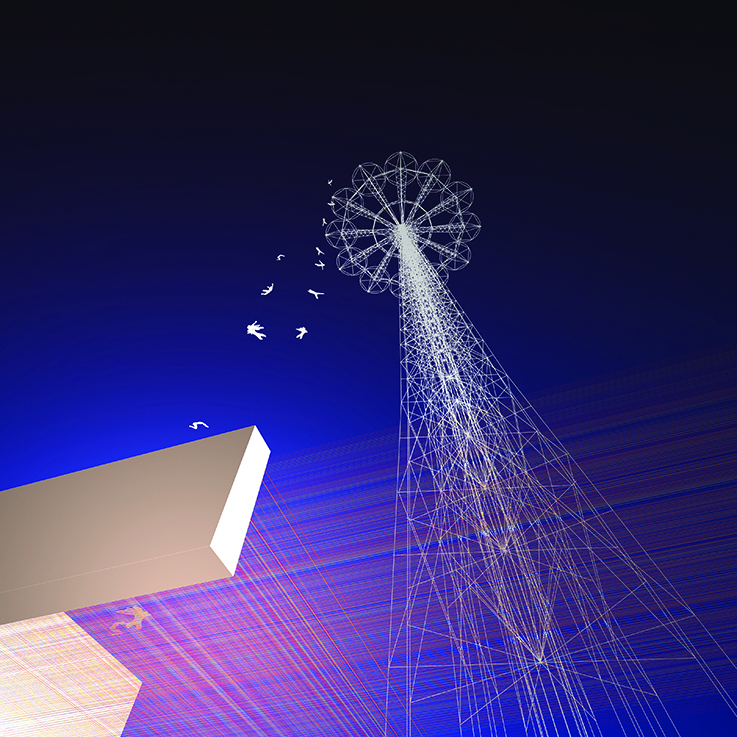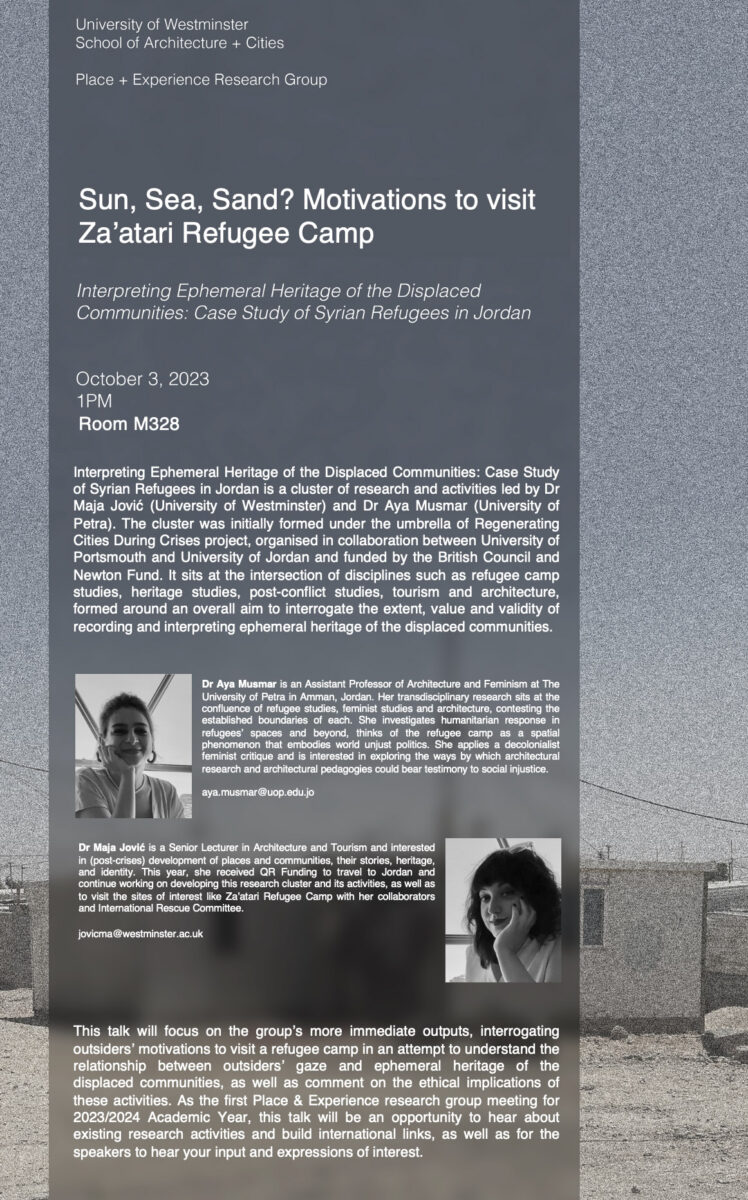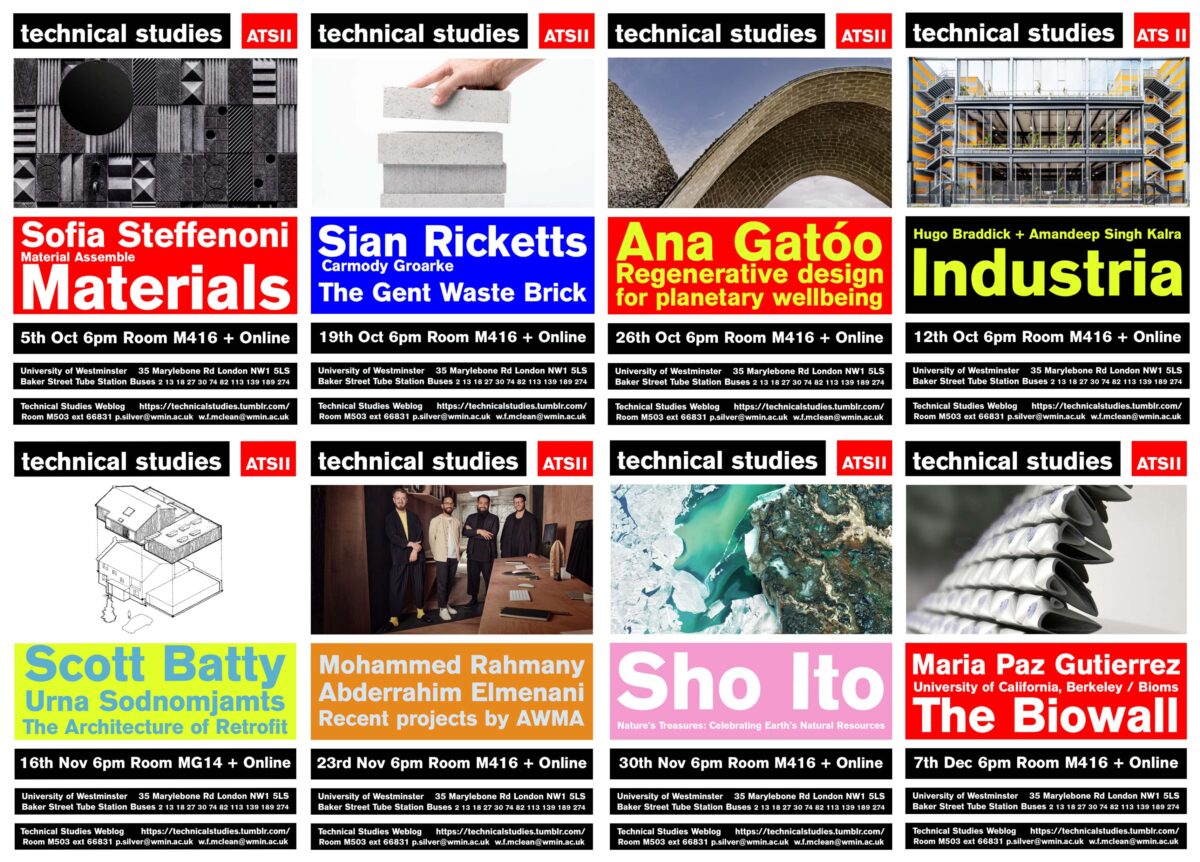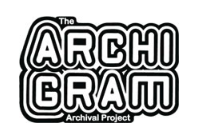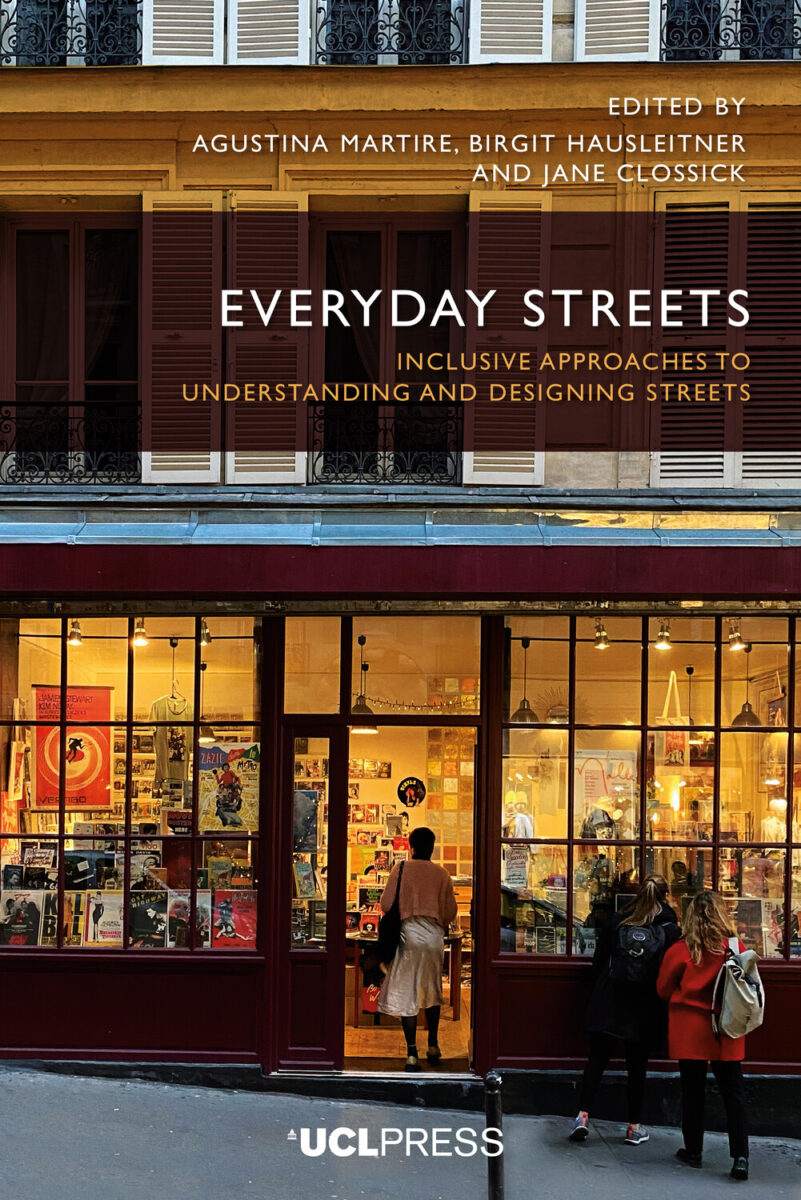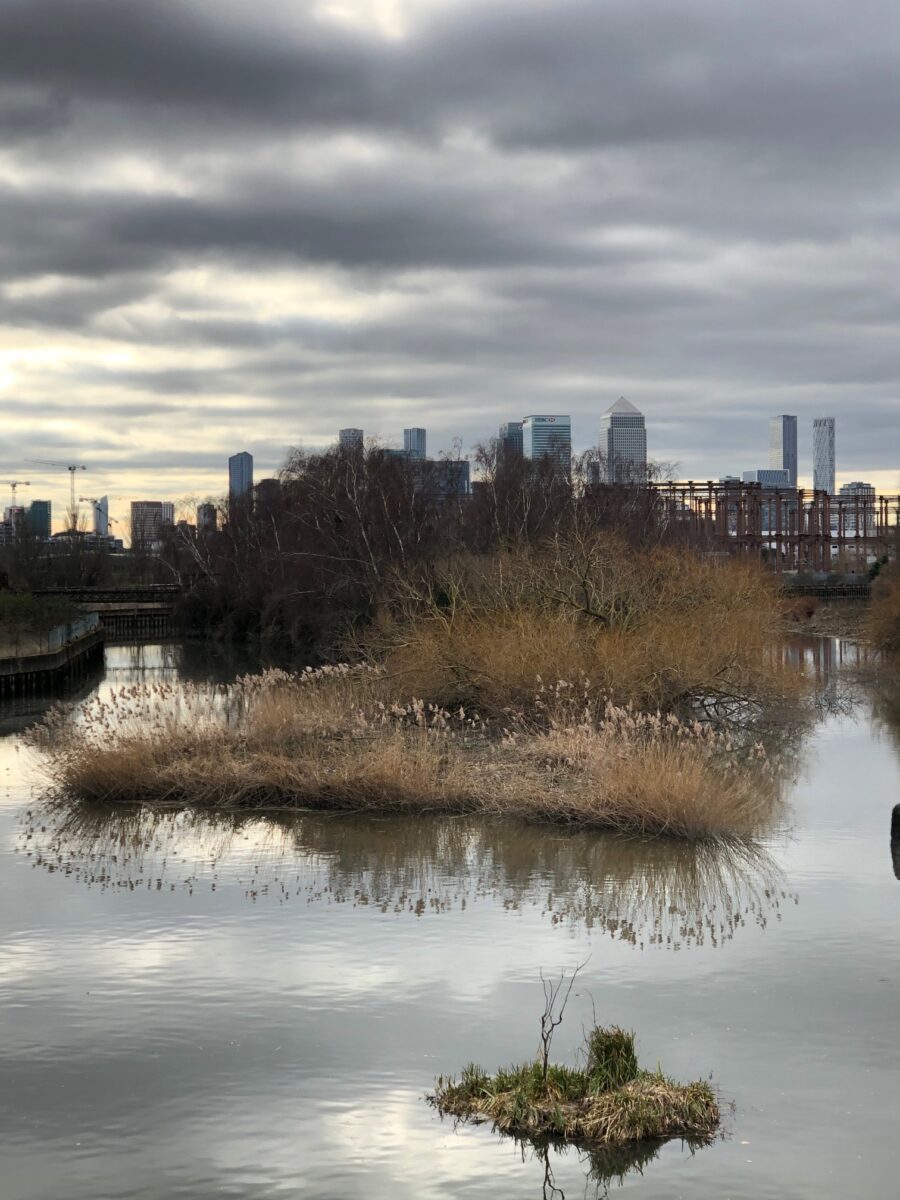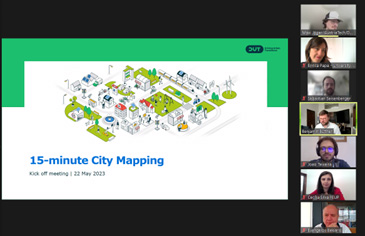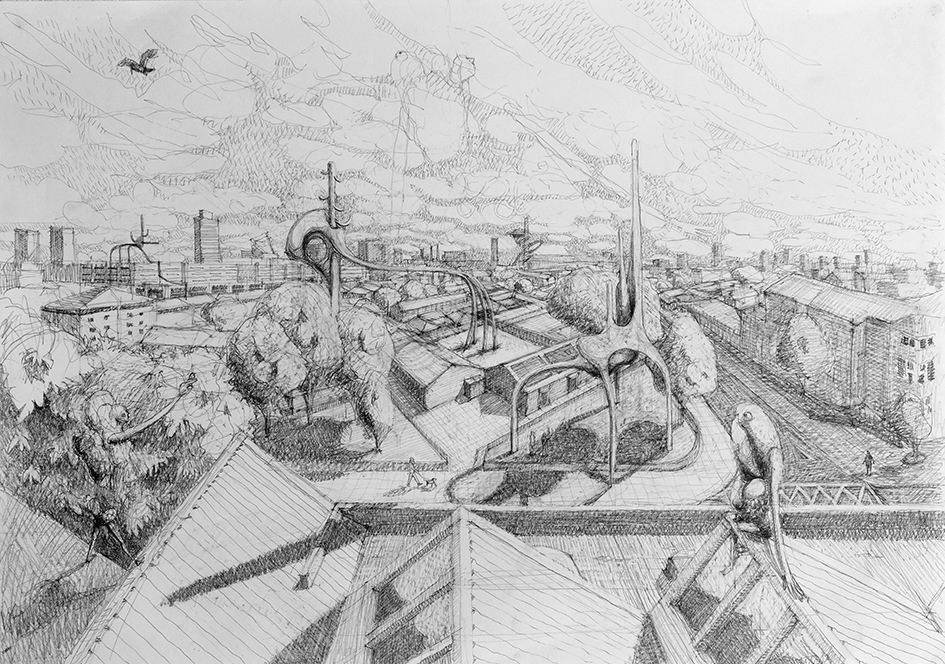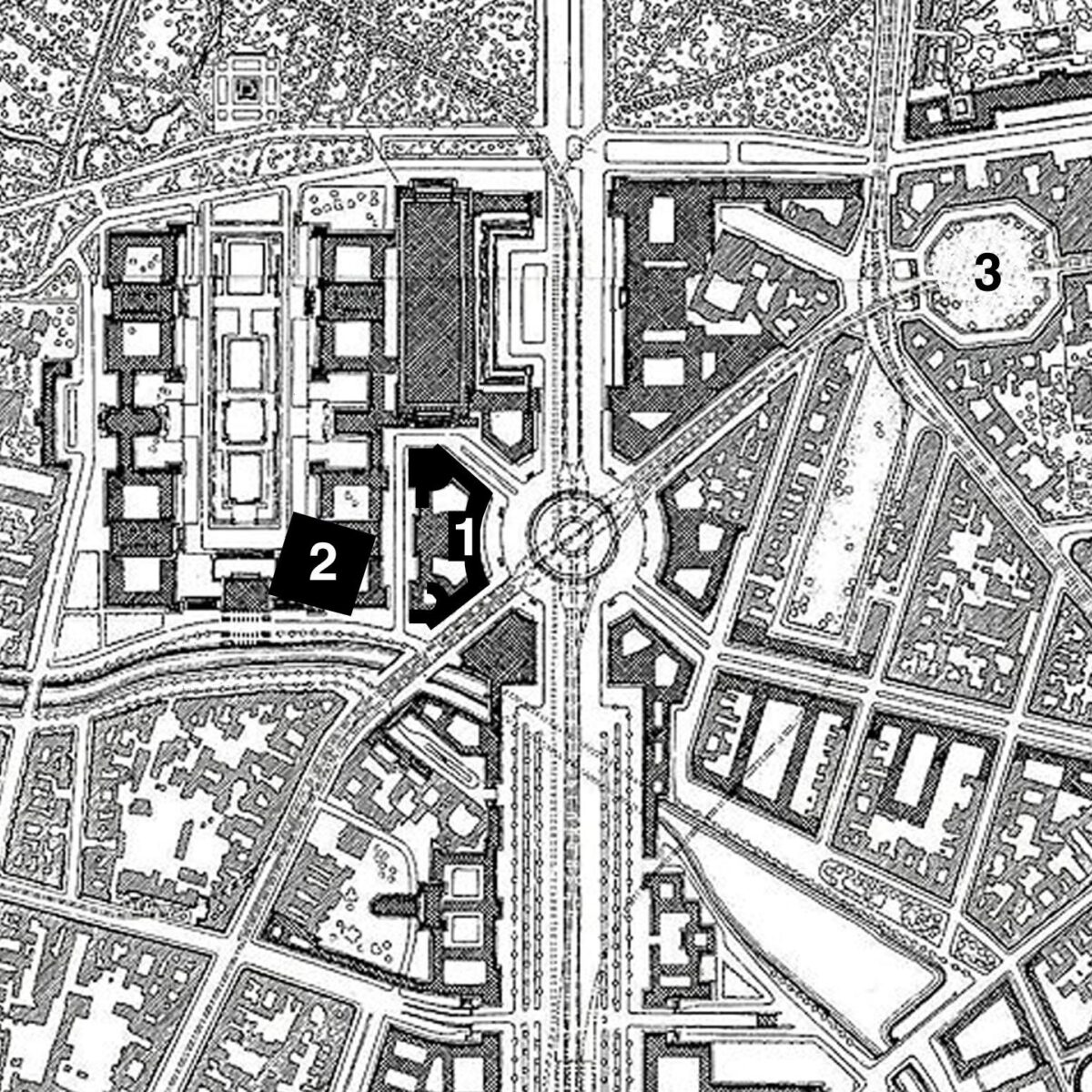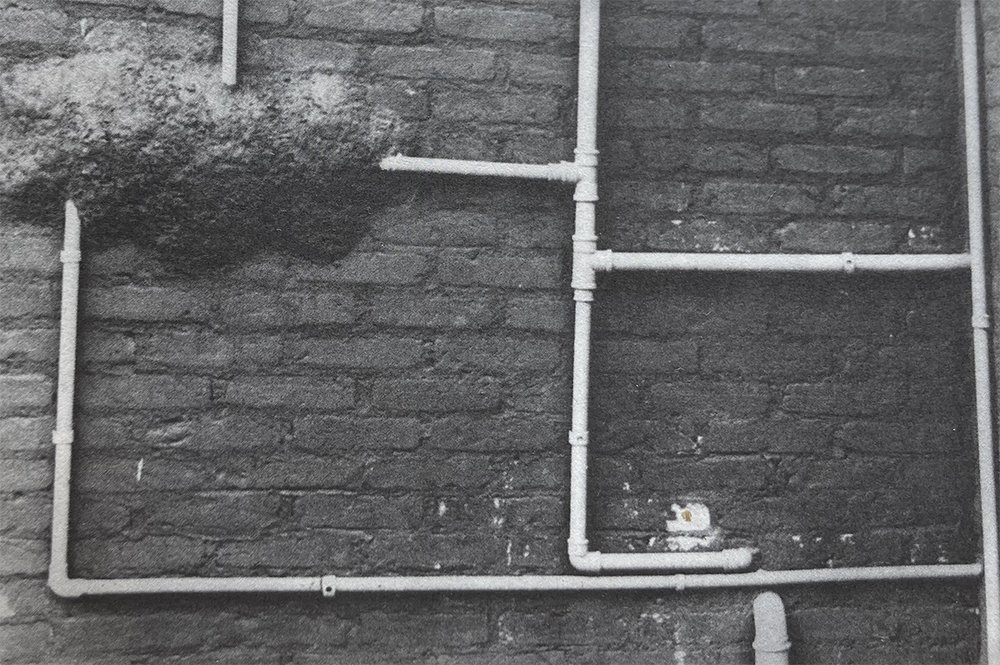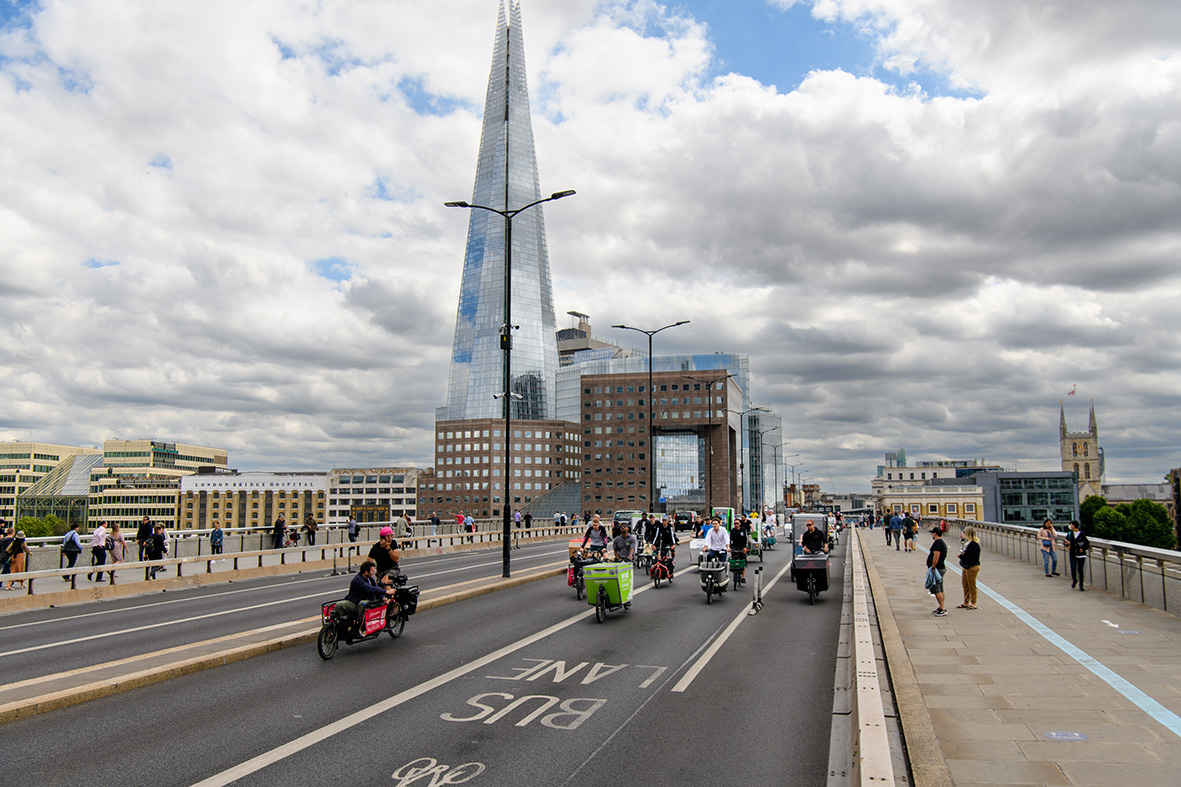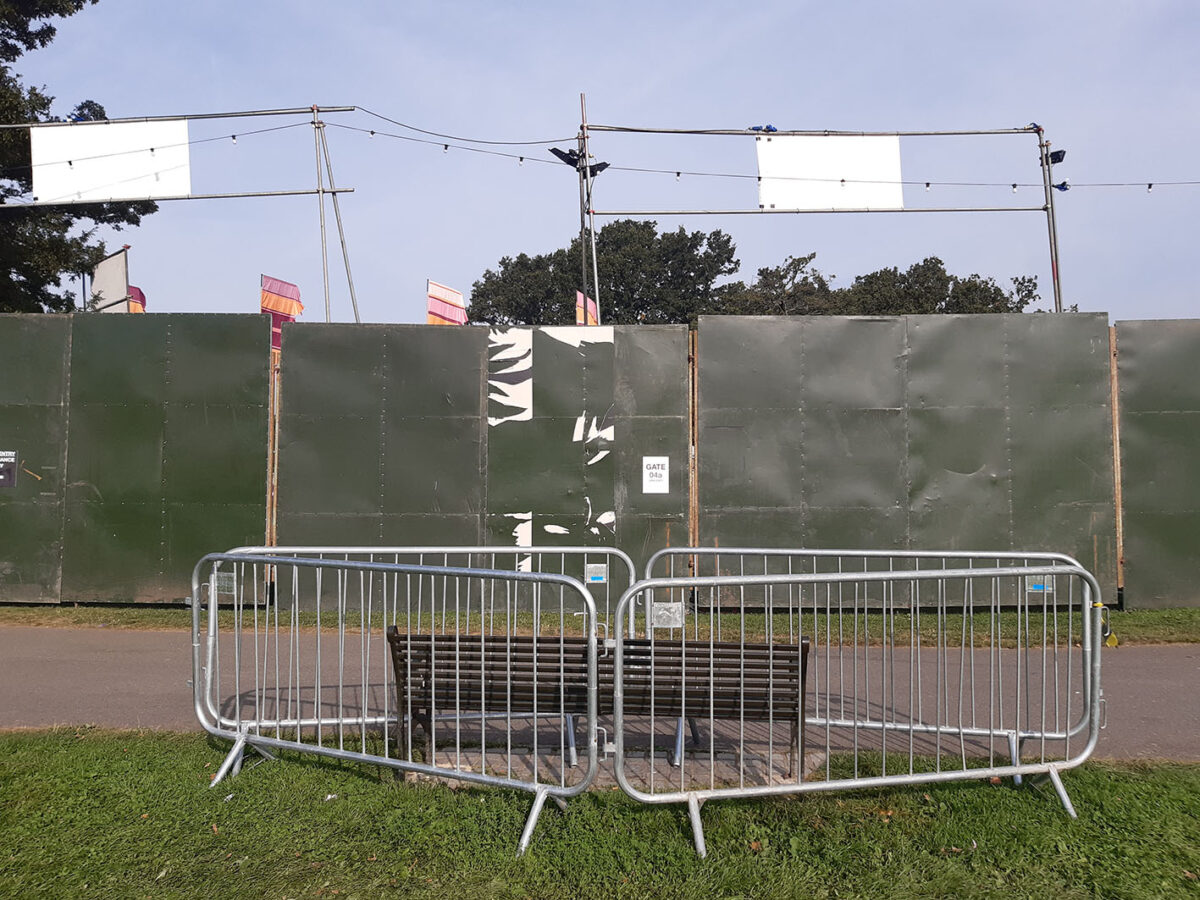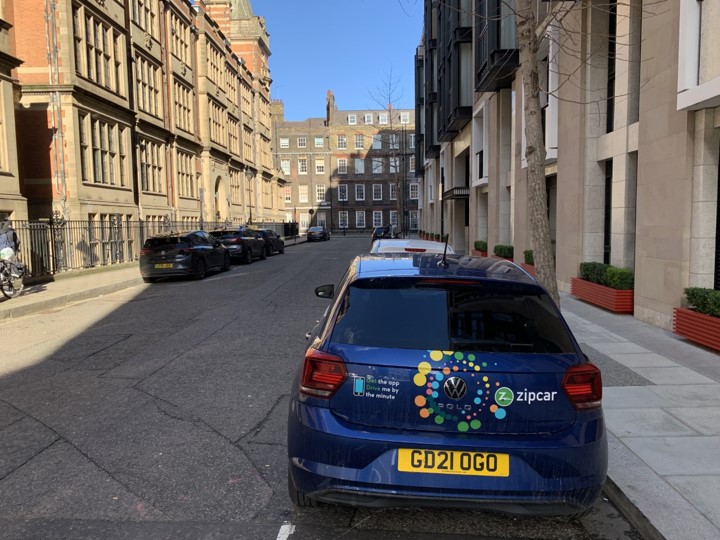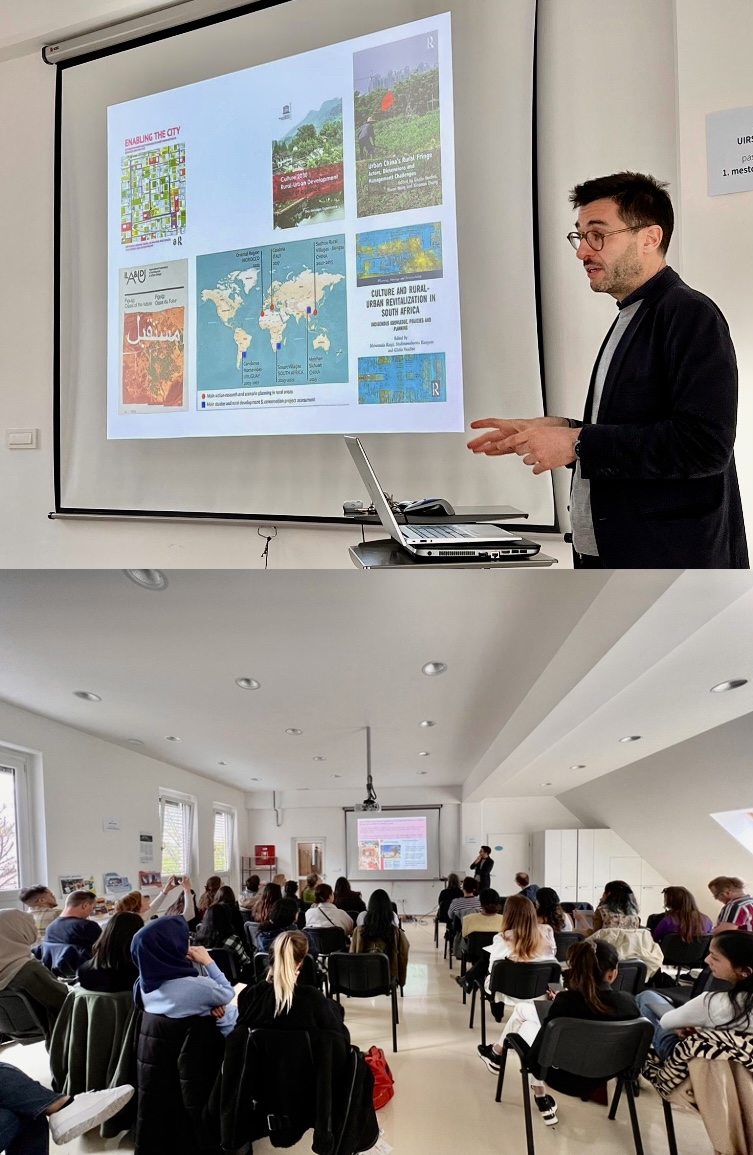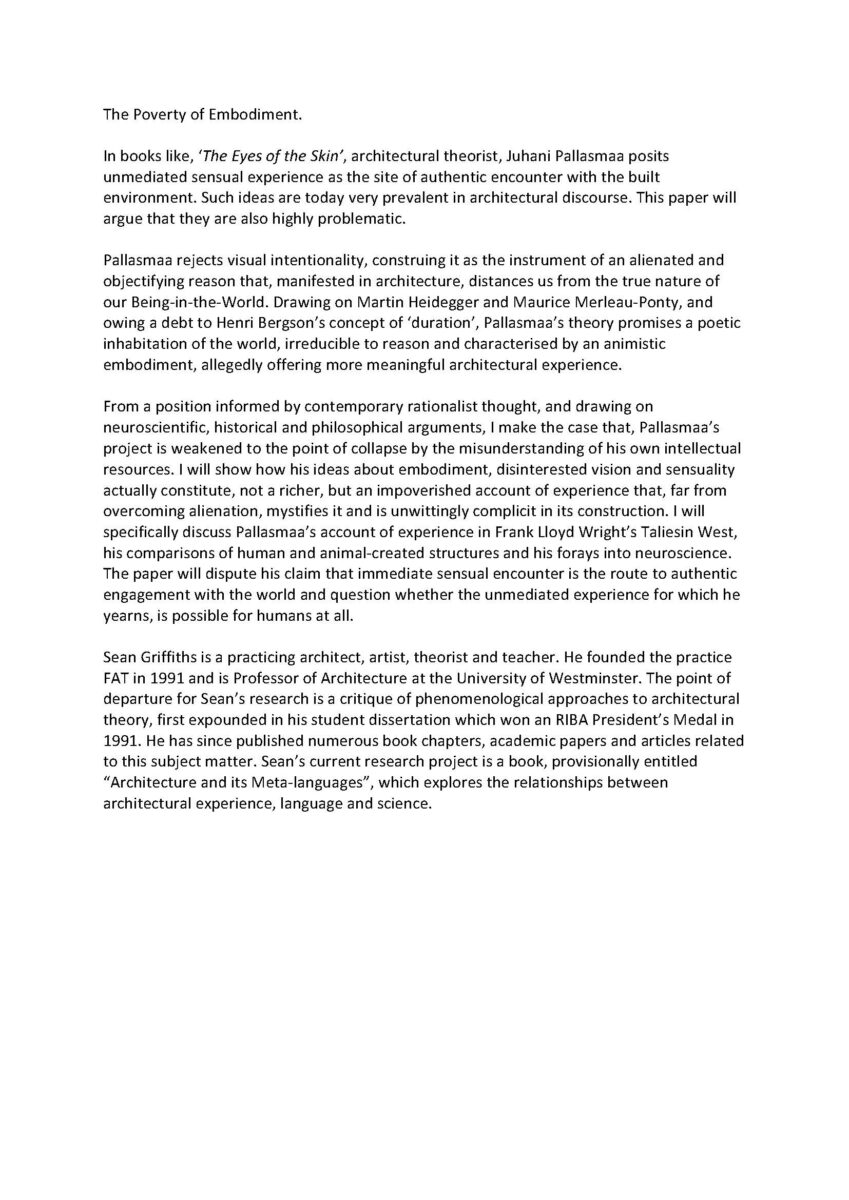This website presents the research activities by staff at the School of Architecture and Cities at the University of Westminster. It is intended to keep students, teachers and scholars updated on research related activities, events and awards by members of the School and to allow them to share their work and achievements with the wider academic and professional community.
Davide Deriu’s photo-essay, ‘On the Edge’, inaugurates the new web issue published by the Canadian Centre of Architecture (CCA), which focuses on how different measures and regulations ensure or prevent safety in our built environment. The piece weaves together a series of photographs from the CCA collections that feature protective barriers such as handrails and parapets. It revisits prominent place in the canon of Western architectural history in order to explore how photographs can visualise the tense state of being on the edge. By disrupting the logic of the archive, the essay draws on the indeterminate character of fragments to provoke new insights and interpretations.
An eco-restoration plan prepared by the team of the British Academy funded project, Reimagining the Good City from Ennore Creek, in consultation with the residents, elders and fishers of Ennore, Chennai.
An exhibition, film screenings, play performance and workshop to Reimagine the Good City from Ennore Creek, as part of the British Academy funded research project by the same name.
Krystallia Kamvasinou has a chapter titled “Crisis and temporary public spaces: reflections from London, UK” published in the Research Handbook on Urban Design, edited by Marion Roberts & Suzy Nelson (Edward Elgar Publishing, 2024). Gathering together scholars across the globe, the book demonstrates the depth and rigour of 21st century urban design research. Krystallia’s chapter explores adaptive, temporary public space interventions in London during two pivotal moments, the 2008 global financial downturn and the COVID19 public health emergency, and discusses their longer-term contribution to reimagining cities.
This presentation explored the role of the construction site as an essential component of architectural education. It addressed the questions: What kind of educational experience do construction sites offer to architecture students and how is this different from campus based learning? What is unique about the building site as an educational environment? How is this type of learning an example of active engagement and equity, diversity and inclusion? Scott drew on his work with a cross section of over 800 students and architectural practice and the construction industry in London.
Routledge will publish their much-anticipated Encyclopaedia of Technology and the Humanities on the 29th April this year. The book covers topics such as archaeology, cultural heritage, design, fashion, linguistics, music and philosophy. The field of architecture is represented by Pete Silver and Will Mclean in a chapter entitled A Critical Pedagogy for Architectural Technology.
The 13th METU Architectural History Graduate Symposium was held in Ankara on December 21-22, 2023, and explored multiple interconnections between health and architectural and environmental histories. At this symposium, Davide Deriu delivered a keynote lecture (online) based on his recent book, On Balance: Architecture and Vertigo. The talk was the closing event of the programme and was followed by a lively Q&A session.
The paper was delivered as the inaugural lecture at the 8th International Conference on Contemporary Religious Architecture: The Client.
K. Jordan, ‘White Spirit: Situating Whiteness in Contemporary Church Architecture’ Architectural Histories, Vol 11(1) pp.1-14 2023
In his polemical tract, The Present State of Ecclesiastical Architecture in England published in 1843, AWN Pugin condemned the ‘vogue’ for whitewashed church interiors that had characterised Protestant iconoclasm: for him, the return to colour and darkness was an indispensable backdrop to the reawakening of ritual, tradition and the sacred. In 19th-century Christian theologies, colour (or the lack of it) was profoundly important: no decorative scheme was ever applied without considering the religious implications. The long history of whiteness as a trope in Christian visual culture has been well documented but little attention has been paid to its meaning in late modernity. In the 21st century, whiteness is understood as a polyvalent and freighted concept, bearing implications that reach beyond the religious and into secular critical discourses. In this essay, I explore the contemporary vogue for whiteness as a motif in church architecture, focusing on its political and cultural significance in relation to the decline of traditional Christian worship and the rise of ‘believing without belonging’.
An inter-disciplinary two-session panel that invited contributions that presented, reflected on or critically analysed visual / aesthetic cultures of climate change data, the scientific and artistic imaginaries they draw from, the manners in which they make climate change and its data palpable, the new collaborations and alliances they foster and the new publics they create. The panel was organised with Neal White (School of Arts, University of Westminster), Roberto Bottazzi (The Bartlett, UCL) and Kaya Barry (Griffith Centre for Social Cultural Research, AU). It included presentations by Jonathan Cane, Rohit Majumbdar, Mariska Versantvoort, John Zhang, John Cook, Guy Sinclair and others.
This presentation discussed the counter-mapping strategies used by the fishers of Ennore Creek in north Chennai, alongside other ways of visibilising their struggle (protests, tours, festivals, music videos), to resist the degradation of their creek-based lives and livelihoods by a state-sponsored heavy industry complex, facilitated by the manipulation of maps. It focused on one instance of counter mapping, when the fishers’ map was not a map at all, but a lively demonstration of fishers standing thigh deep in water, protesting the depiction of the water as land on a fraudulent map issued by the State to justify encroachment into the creek.
At this panel, Lindsay Bremner presented ongoing work by an interdisciplinary team of researchers, activists and fishers to rethink the meaning of what constitutes a good city from Ennore Creek in North Chennai in India, as part of a British Academy funded research project. The presentation engaged with ideas of the Good City that have shaped Chennai since the early 20th Century, and presented provisional ideas emerging from a fisher-led ‘People’s Plan’ to reimagine Ennore creek not only as a human lifeworld but as a becoming-world of multi-species entanglement, as the basis of good-citiness-to-come.
In recent years, Creative Placemaking has played an essential role in urban intangible heritage management. However, the trade-off between economic development and urban conservation might lead to unsustainable outcomes, such as property-led development, commercialization, and gentrification, and these side effects would harm the interests of creative actors and stakeholders in the community. In this seminar, the preliminary findings of PhD research creative placemaking in Wudadao, Tian-jin, China, will be presented.
What is the proper relationship between architecture and language? How does the way this relationship, as it is currently construed, allow or constrain architecture’s capacity to address the fundamental political and environmental crises of our time? Where does the uniquely human activity of producing architectural experience sit in relation to current conceptions of our relationship to nature as informed by science? Part of a wide-ranging research project, these are some of the questions examined in a book proposal, putatively entitled Against Poetics – On Architecture and Language, to be discussed at this research seminar.
Masters Architecture students at the University of Westminster have completed a lightweight, prefabricated timber structure that forms part of a therapeutic gardening project in east London. Designed by the Live Design Studio for Masters DS20 Architecture students at the University of Westminster, The Growing Space forms part of the bustling citizen community hub at London’s Cody Dock. Constructed from Douglas Fir, the lightweight timber structure provides a space for horticultural activities. The project was initiated and led by Maria Kramer.
Partners: Webb Yates Engineers, Nicholas Alexander, OfCA, Gasworks Dock Partnership
Sponsor: Rodeca
Funding: University of Westminster QHT Fund
The Power of Events is an industry-led initiative that aims to showcase the UK Events Industry. The not-for-profit organisation provides a platform that gathers all the major industry players and collaborates with selected universities in the country to carry out research on the social, cultural and economic value of events. The Tourism and Events Team at UoW hosted the launch of the PoW app on October 17th at Fyre Hall, Regents Campus. The app aims to engage students, industry professionals and academics in future research projects that will support the advocacy work carried out by the PoW. The event was attended by students, industry representatives and alumni.
Dr Stroma Cole, Reader in the School of Architecture and Cities, spoke at the Mainstreaming Net Positive Hospitality Summit, organised by the Sustainable Hospitality Alliance, on driving sustainability in tourism through equality and inclusion.
The event explored how to push positive change in the hospitality industry while keeping sustainability at the heart of operations. The organisation has recently launched a five-year strategy to support the growth of the sector sustainably and responsibly to support their goal of bringing the hospitality industry together to tackle worldwide environmental and social challenges.
This one-day conference, hosted and sponsored by the Italian Cultural Institute of Istanbul, reappraised the cultural, social and political relations between Turkey and Italy in the early period of the Turkish Republic. Davide Deriu was invited to give a talk based on his AHRC-funded research on western perceptions of modern Ankara. Focusing on the figures of Atatürk and Pietro Canonica (the Italian artist who sculpted several monuments of the Turkish leader), the event advanced new historiographic and critical interpretations. A bilingual publication will follow.
Since 2016 local authorities in London have pursued a novel policy of closing the streets in front of schools to cars during pick up and drop off times. These ‘School Street’ schemes were initially relatively marginal but since the beginning of the Covid-19 pandemic have increased dramatically, now covering nearly a third of state-funded primary schools in the city. This seminar reports on the work conducted as part of a doctoral research project at the Active Travel Academy focusing on these schemes.
An installation designed as an assemblage of architectural parts drawn from the V&A collection of drawings and photographs of historic Islamic architecture. This is intended to reflect the way that British mosques have been built by their communities, where they reference various traditions of Islamic history through architectural symbols.
Ramadan Tent Project is an award-winning charity established in 2013 with a mission of bringing communities communities together, curated the pavilion and hosted a series of artistic, cultural, creative events to inspire and engage audiences from all backgrounds.
This paper explored faith and diaspora in the contemporary urban landscape through an examination of the adaptive reuse of listed twentieth-century cinemas in London by migrant communities. The paper considered encounters between heritage bodies, local communities and faith groups, examining intersections of the sacred and secular: assimilation and autonomy.
Jordan, K., ‘Modernity and Monasticism: Roman and Anglo-Catholic Monasteries in the Twentieth Century’ in Doig and Barnwell (eds) Places of Worship in Britain and Ireland 1929-1990, Shaun Tyas (2023) pp 128-149
This chapter offers a critical overview of the architecture of Roman and Anglo-Catholic religious communities in the twentieth century.
Jordan, K., ‘Architecture and Buildings: Building the Post-Emancipation Church’ in Mangion and O’Brien (eds) The Oxford History of British and Irish Catholicism, Oxford University Press, (2023) pp 56-77
This chapter makes a critical reading of the buildings commissioned for the Catholic Church in Britain and Ireland between 1830 and 1913
With the aim of envisaging more sustainable urban development pathways that address current global challenges, a series of projects were funded under the Joint Programming Initiative of the European Commission call on Urban Accessibility and Connectivity (ERA-NET ENUAC, 2021-2024). Within this framework, ACUTE (the Accessibility and Connectivity Knowledge Hub for Urban Transformation in Europe) was launched in 2022 in order to synthesize ENUAC project results. The seminar will introduce the ACUTE knowledge hub and present a series of research findings and innovative solutions on accessibility and connectivity across 15 European projects.
In this research seminar, John Cook and Ben Pollock will present the work of Climate Cartographics, a UKRI funded proof of concept grant that followed from the ERC grant funded project Monsoon Assemblages. They will discuss a series of pilot projects undertaken for external clients, as a way of testing cartographic and service delivery methods, with a view to setting Climate Cartographics up as a self sustaining company.
Gender based violence is a global pandemic and water insecurity is increasing in intensity and extent. In this seminar, Stroma Cole discussed a study that used qualitative and quantitative data to examine the association between these two global health threats. A significant positive association was found between household water insecurity and reported gender-based violence in Sumba, Indonesia. The concept of ‘gender-based water violence’ was defined as the spectrum of stressors associated with water insecurity that are so extreme as to significantly threaten human health and well-being, particularly that of women and girls.
Re-Imagining Coral Reefs, a project led by John Zhang utilising mixed reality technology as a tool for cross-disciplinary research and climate data communication, took part in this year’s Creatch’23 conference.
CREATECH ‘23 is an International Conference and Exhibition on technology for the design, creative, and digital industries. The event is transdisciplinary and multimedia, encouraging wide participation across the spectrum of research and practice. The conference provides a dynamic forum to present new work and share ideas around the creative opportunities enabled by emerging technologies, while the public exhibition and participatory workshops offer hands-on experience of the technologies and practices being discussed.
Description (event/project) / Abstract (publication only): Unproductive work is sometimes called art, or waste. We don’t call it that we call it care.
DWA’s proposed new structure at the heart of the City of London is a cross between a museum and a university, its key function is to investigate technologies of care.
Such technologies are counter-creative, pointing away from capitalism’s endless accumulation and constant change. Technologies of care look after things, nothing is art, nothing waste.
(with many thanks to Dr Alessandro Ayuso for letting us use his leap models)
ISBN: 9781838018030
This volume of Incomplete Works gathers together a number of speculative design projects made by Doctor Watson Architects in the early years of the 21st century. Most, if not all, of the projects began as a response to a specific architectural competition brief, however, DWA never were interested in winning a competition.
This talk will interrogate outsiders’ motivations to visit a refugee camp in an attempt to understand the relationship between outsiders’ gaze and ephemeral heritage of the displaced communities, as well as comment on the ethical implications of these activities. As the first Place & Experience research group meeting for 2023/2024 Academic Year, this talk will be an opportunity to hear about existing research activities and build international links, as well as for the speakers to hear your input and expressions of interest.
The Thursday evening ‘open’ lecture series highlights new technological developments in the fields of architecture, engineering and environmental design. This year, talks cover regenerative construction, low-carbon engineering, retrofit, and materials technology. The series is organised by Will McLean and the talks are filmed by Teo Cruz. The talks take place at 6pm every Thursday evening in room M416 starting on 5th October. Talks are simultaneously live-streamed and recorded with links to stream and recordings found via URL link below.
After being off-line for some time, the Archigram Archival Project is now once again available to view online via the British Library’s UK Web Archive.
Littlefield D (2023). “The agency of small things: indicators of ownership on the streets of Liverpool and Belfast”, chapter within, Everyday Streets: Inclusive approaches to understanding and designing streets.
Edited by Agustina Martire, Birgit Hausleitner, and Jane Clossick. UCL Press.
Streets are, on the face of it, physical spaces comprising the raw material of urban design and architecture. This physical realm, however, represents only a small part of the “street”; there is a deeper reality of social constructions guiding and encoding behaviours. Drawing on Actor-Network Theory and New Materialism I suggest these social constructions have the force of a “thing” – just as much force as a physical thing such as a wall.
Kate Jordan (2023) Between the Sacred and Secular: Faith, Space, and Place in the Twenty-First Century, Architecture and Culture, DOI: 10.1080/20507828.2023.2211823
In his 1954 poem, “Church Going,” Phillip Larkin anticipated the end of religion and the ruination of Britain’s churches. “What remains,” Larkin asked “when disbelief has gone? Grass, weedy pavement, brambles, buttress, sky.” In one respect, Larkin was right: the decline of traditional worship in the West did produce scores of redundant churches. But he was also wrong: the tendency to view abandoned churches as proof that ultimately “belief must die,” misses the myriad ways in which faith has, in fact, simply reconfigured and produced new spaces. Such weaknesses in the Western-centric disenchantment model have been recognized in the social sciences, where scholars are increasingly looking toward the built environment to understand new alignments in religion and society. However, the field remains somewhat overlooked by architectural theorists and historians. This article explores religious practices from an architectural perspective, offering an overview of faith, space and place in the twenty-first century.
The River Lee, which can be described as a ‘technoscape’ has been teased and contorted by years of engineering so that it bears little resemblance to its ‘original’ course. In this presentation, Corinna Dean discusses the River Lee as an ecological system interwoven with its urban surroundings by talking about the LIVE project, ‘Liquid Futures: Floating Biodiversity Habitats’ which she carried out with the environmental charity Cody Dock on the River Lee. The co-production project between Dean, members of Cody Dock and students from the University of Westminster has provided an opportunity to think with and through water and its composites, whereby contamination becomes agency.
University of Westminster Transport Group is starting a new research project on the topic of 15-minute City. The cornerstone of this ambitious project lies in the 15-minute City mapping activity, which provides an initial overview for the Innovation Portfolio. By employing robust analytical methods, we will gather international experiences, tools, and best practices, paving the way for subsequent phases of the DUT 15-minute City Transition Pathway roadmap.
Consortium: Benjamin Büttner (project coordination), Sebastian Seisenberger, Cecília Silva, João Teixeira, Enrica Papa, Maja Piecyk, Julian Allen
Leaky Embodiment Alter-ego Personas (LEAPS) are figures envisioned through portraits, animations and drawings. Alien but possibly endearing, LEAPs are tragicomic actors with unwieldy bodies comprised of bulbous, mismatched, ever-changing parts. The LEAPS suggest worlds beyond themselves which do not align precisely with our own; in this slippage they are not only diagnostic; they are also devices, interjecting possibility. The Eastway Studiolo is a speculative architectural project that asks how LEAPs could aid in catalysing the presence of realms of relationality not accessible through the inclusion of normative scale figures in design.
Victoria Watson, Doctor Watson Architects, Incomplete Works Volume Four, Air Grid Publications, Doctor VA Watson 2022 isbn 9781838018023
This is a compilation of 24 items, each of which draws together an extract from a historically significant text about the nature of colour and an image of an Air Grid structure posed in space (a Cosmological Leap).
Victoria Watson, Restoration, Expansion and the Building Art: Contemporary Issues in the Life of Mies van der Rohe’s Museum of Modern Art (New National Gallery) in Berlin, JOURNAL OF HISTORIC BUILDINGS & PLACES | VOLUME 01 2022, 113-124
A consideration of the sensitive issues around the restoration and extension to Mies van der Rohe’s Neue Nationalgalerie (NNG) on the Kulturforum in Berlin. The NNG is important for the City of Berlin because it is the only building realised by Mies in Europe after his emigration to the USA. But its importance goes further than that. It is an icon in the history of twentieth century art and architecture, embodying the ideals of cosmopolitan modernism. As a building of unexampled clarity and virtuosity, any architectural intervention will inevitably invite discussion of means and ends and the appropriateness of change to the fabric and setting of the original historic monument.
In this presentation, I explore small-scale civic gatherings in Finsbury Park and their spatial configurations. Using the lens of conviviality I study how comfortable park users are around difference, and the values of inter-ethnic interaction in public parks. Using the lens of conviviality I study how comfortable park users are around difference, and the values of inter-ethnic interaction in public parks.
Launched in 2020, Translating Ferro/Transforming Knowledge is a 4 year research project that has two central aims – to translate and disseminate the work of Brazilian architect Sergio Ferro to an English speaking audience, and to initiate a new field of enquiry named ‘Production Studies’. For this research seminar, Nick Beech will introduce the project and his own contribution – an examination of Ferro’s reading of the nineteenth century designer William Morris. Throughout Ferro’s writing direct references and allusions are made to the ideas and practices of Morris, illuminating Ferro’s critique of the discipline and profession of architecture, and putting Ferro into critical dialogue with another field inspired by Morris – cultural studies.
Cargo bikes have been gaining popularity as greener, healthier, and more efficient replacements for delivery vans in cities. A growing body of evidence demonstrates their benefits in reducing delivery times, traffic congestion, carbon emissions, air pollution and injury risk to other road users, compared to motorised vehicles. As this new cargo bike logistics sector rapidly expands and transforms, there is a need for careful consideration of workers’ experiences and overall wellbeing. This research
gives new unique insights on the experiences of cargo bike delivery workers in London and the improvements they would like to see in the sector.
Pale is the Old English word for fence, and to go beyond the pale means to have gone beyond the limits of acceptable action. In this presentation, I discuss whether the installation of temporary fencing in public parks to secure ticketed festivals is now beyond the pale. Fences restrict access, but they also affect how spaces are perceived, used and managed. I use photographs taken in London’s parks to illustrate the materiality of these temporary structures, but also their symbolic significance and wider effects. My analysis emphasises the (often overlooked) importance of fences, and the splintered and sequestered nature of contemporary cities – where citizens are increasingly ‘fenced off’.
The way in which people choose to travel has changed throughout history and adaptations have taken place in order to provide the most convenient, efficient and cost-effective method(s) of transport possible. This research explores two trends — technological and socio-economic change — by discussing the effects of their application in the renewed drive to promote car clubs in Greater London through the introduction of new technologies and innovative ways in which a car can be used and hired, thus helping to generate new insights for car sharing. A mixed methods approach was used. Our findings show that there is an opportunity to utilise car clubs as a tool for facilitating a step change away.
In occasion of the international field trip to Slovenia and Croatia of PG students in Urban Design and International Planning, Giulio Verdini participated in a public talk titled ‘Small Places, Great Ideas: Placemaking in Remote Communities’ hosted by the Institute of Urban Planning of Slovenia, 17 April 2023. His talk was on ‘Sustainable Rural Futures: Culture and Communities’. The discussion that followed helped shed light into challenges and opportunities for rural placemaking in the context of rural Slovenia in comparison with the international practice.
Giulio Verdini gave an on-line keynote talk at Tongji University, 1 March 2023, on Scenarios for culture-led regeneration and urban-rural synergies reflecting on cases of action research implemented in China and Morocco over the last ten years. The lecture series is called ‘International Comparison for urban-rural relationship’ and is part of a project funded by the Ministry of Science and Technology of China on urban-rural integration.
Online AMPS conference, December 2022
In books like, ‘The Eyes of the Skin’, architectural theorist, Juhani Pallasmaa posits unmediated sensual experience as the site of authentic encounter with the built environment. Such ideas are today very prevalent in architectural discourse. This paper will argue that they are also highly problematic.
